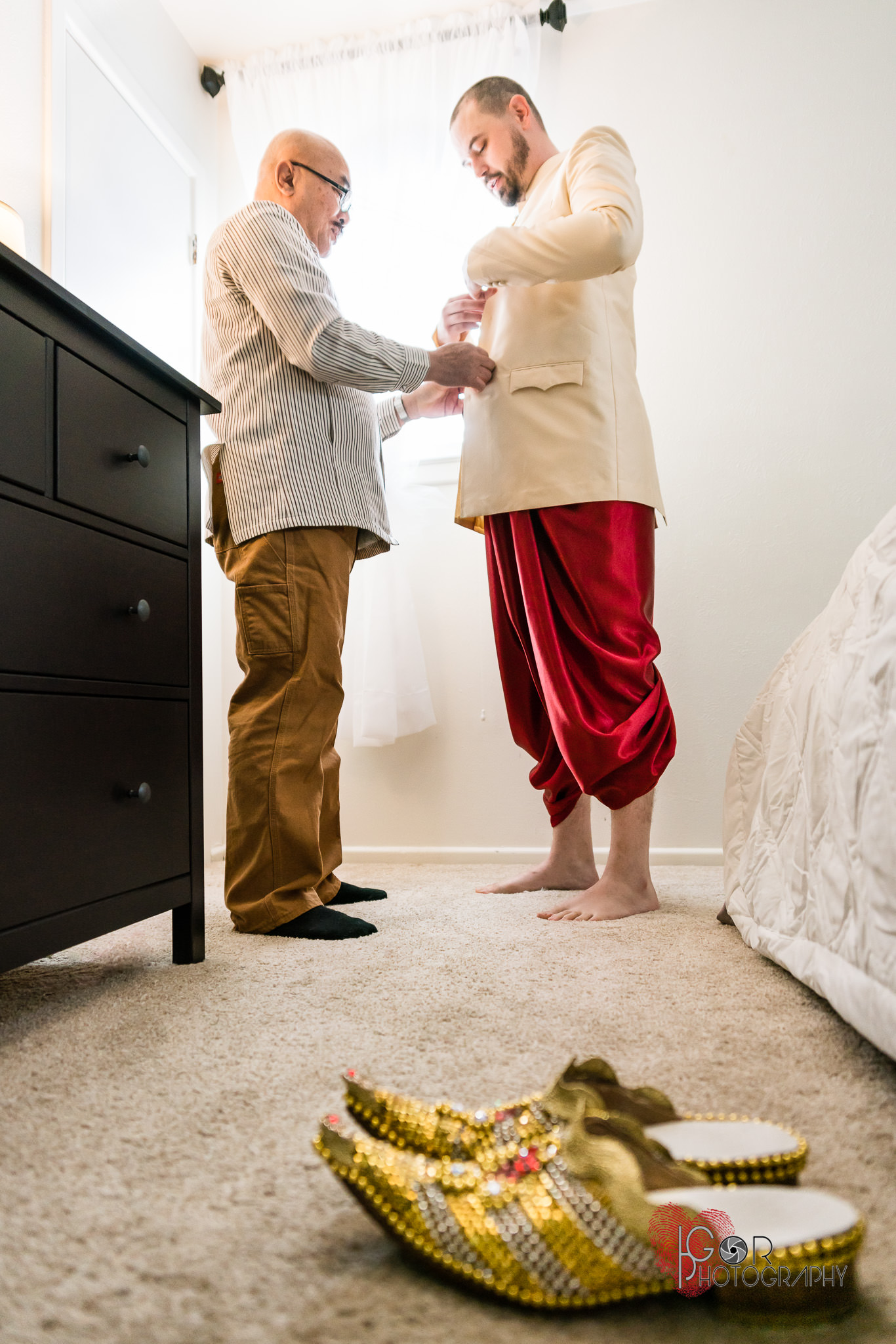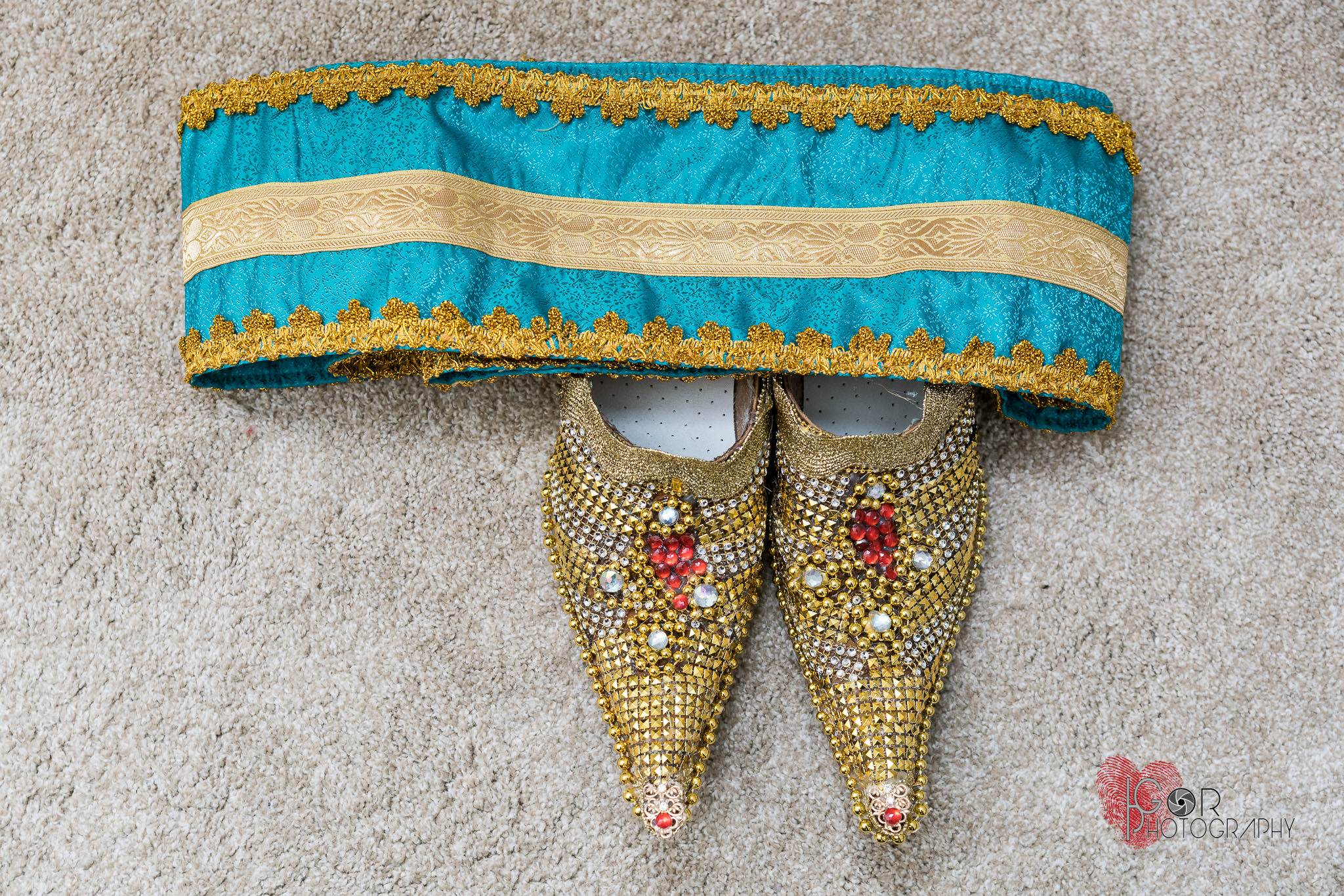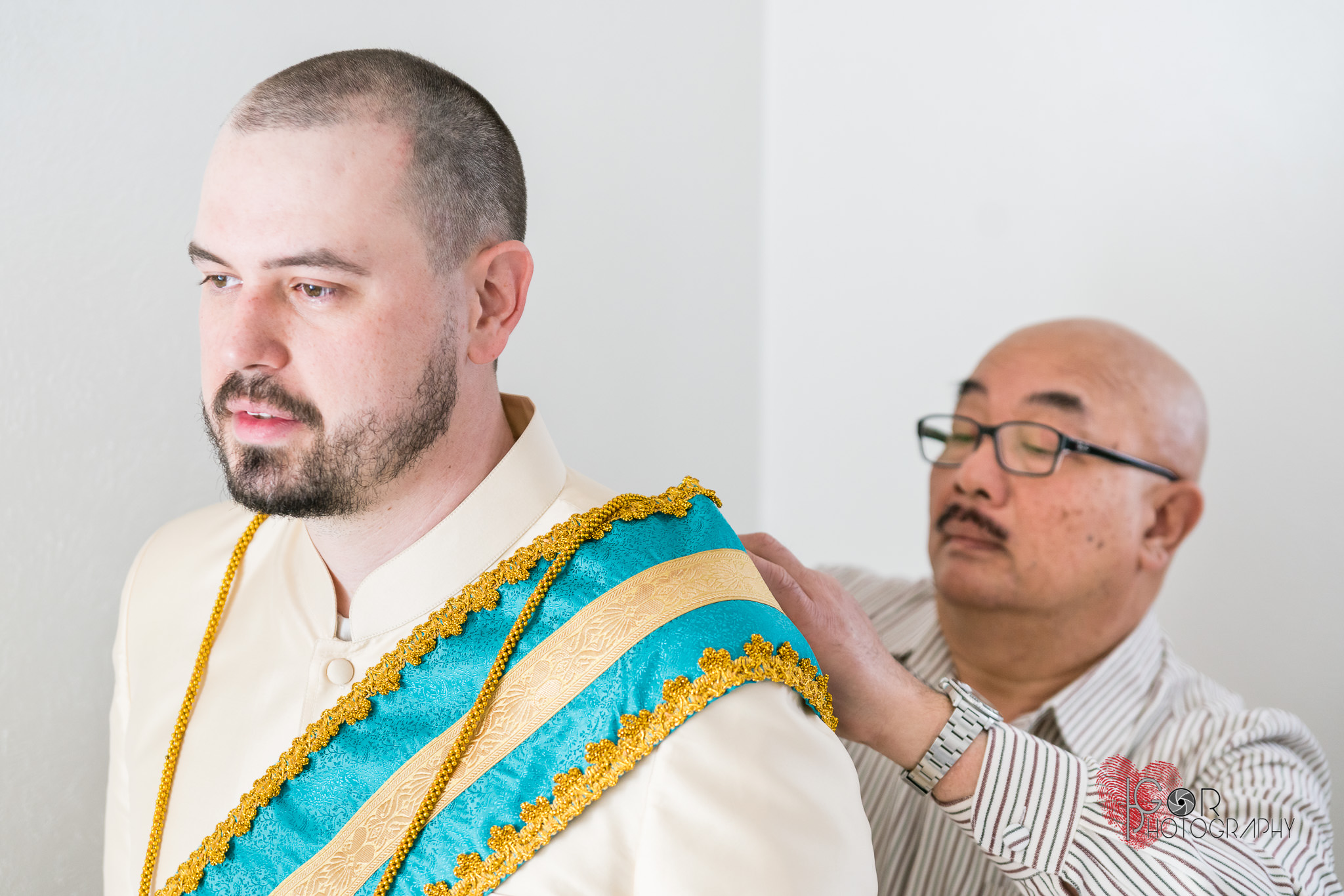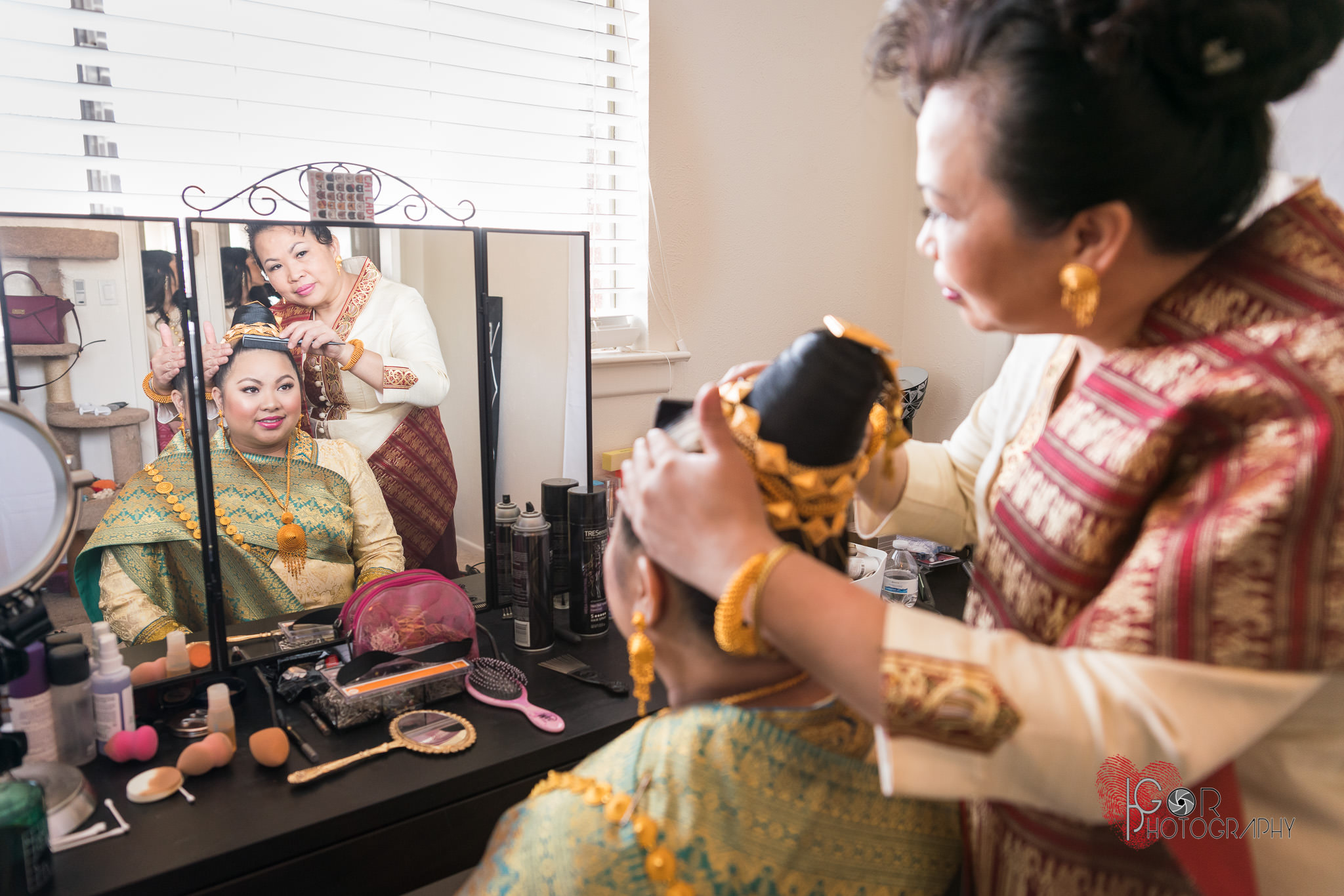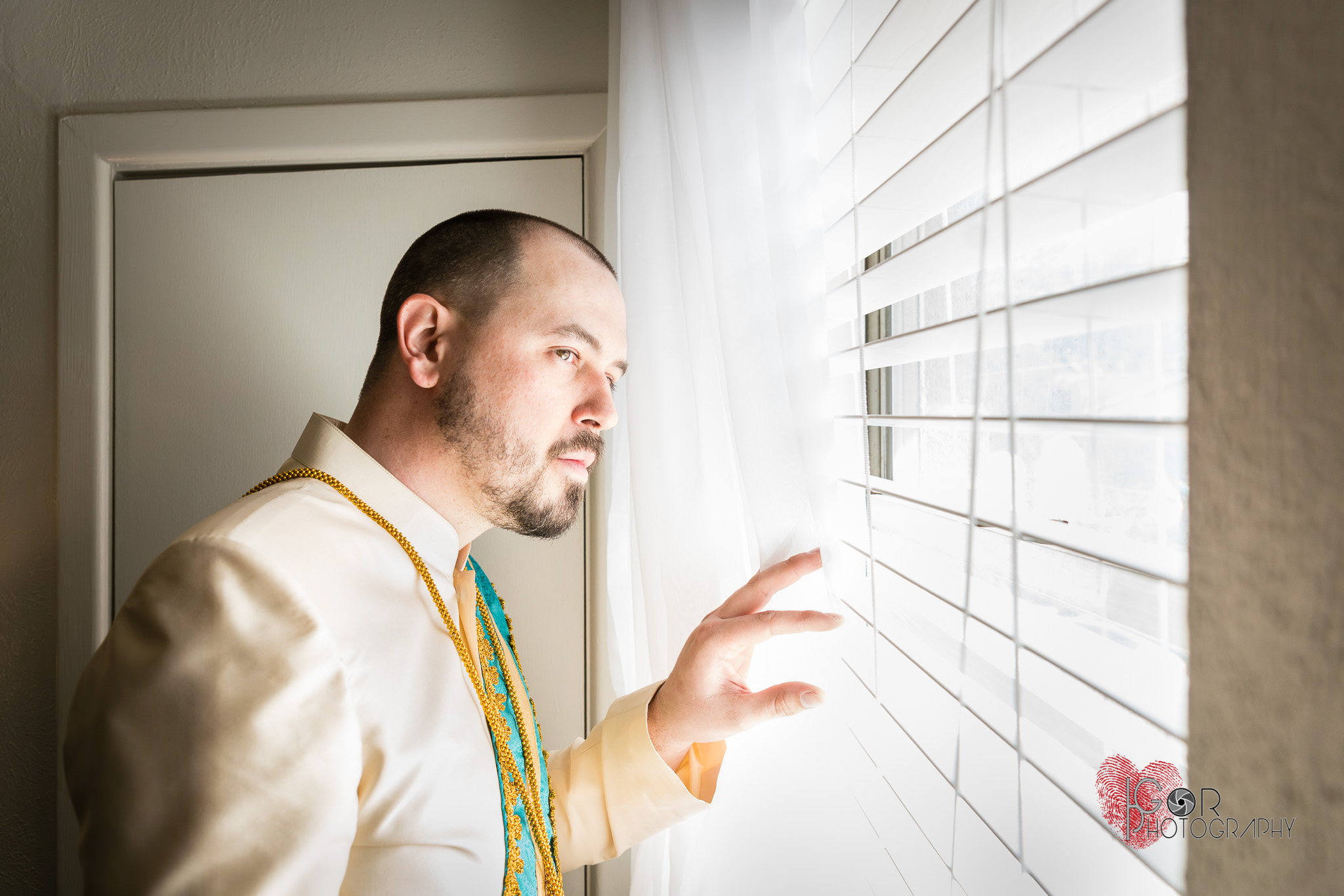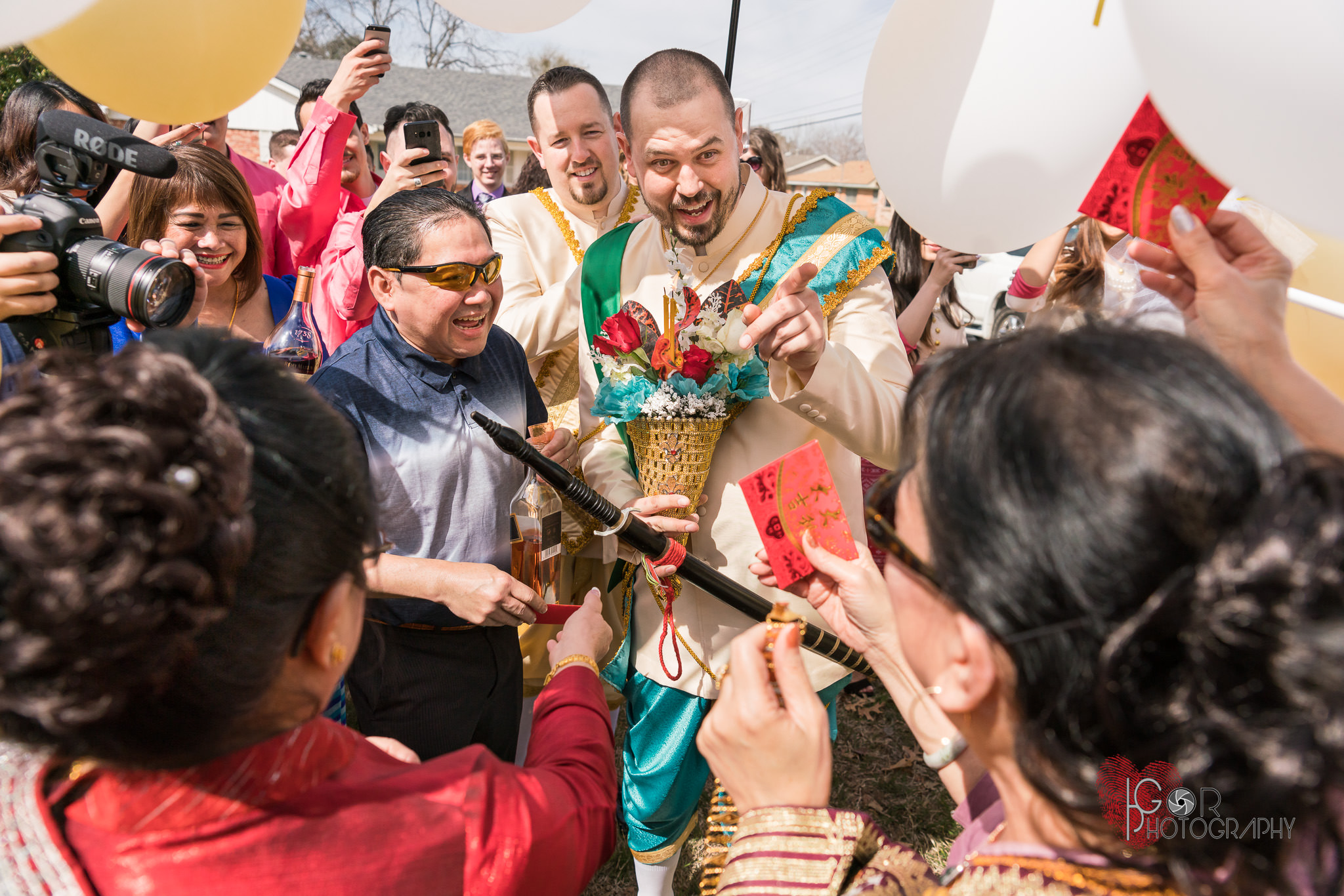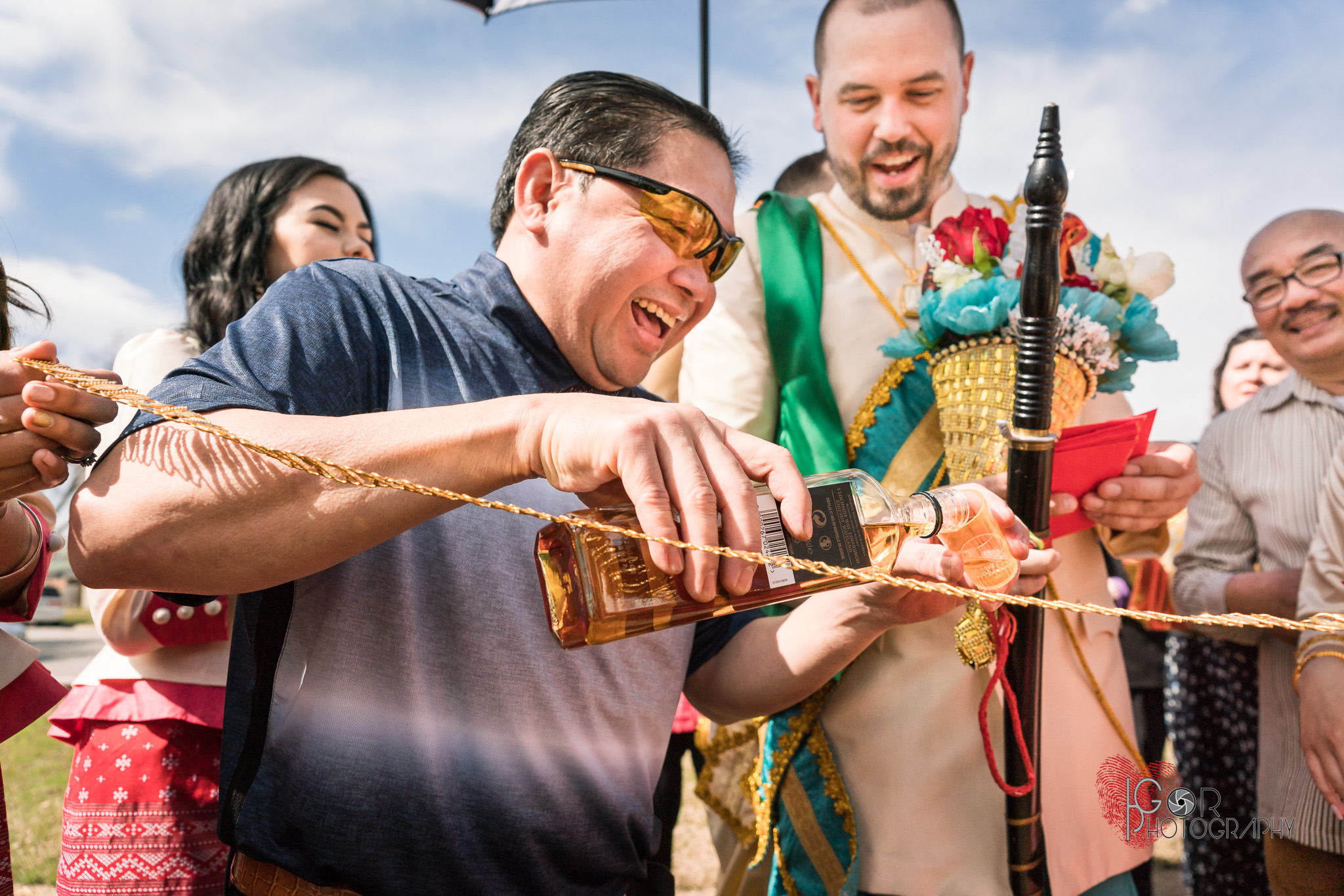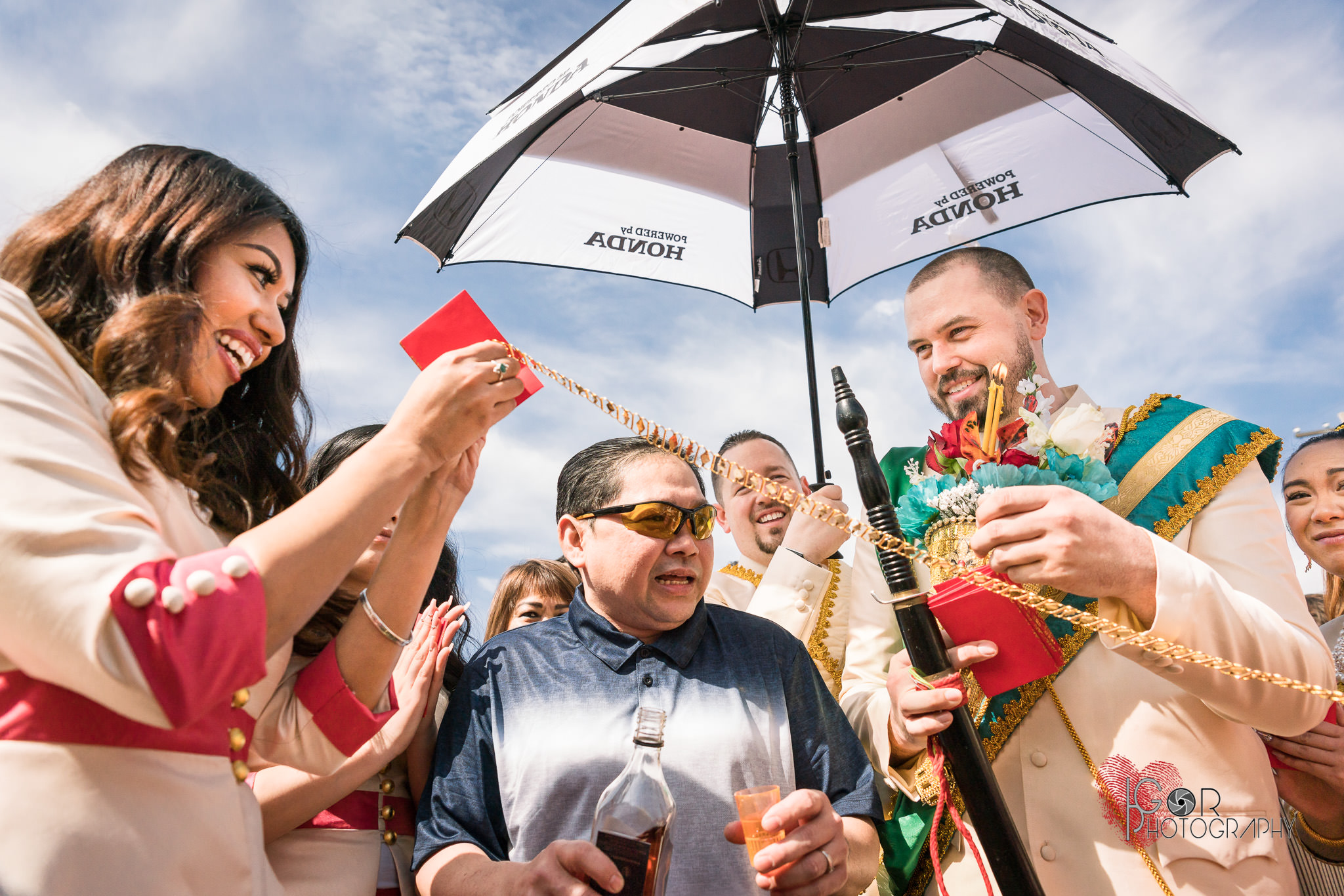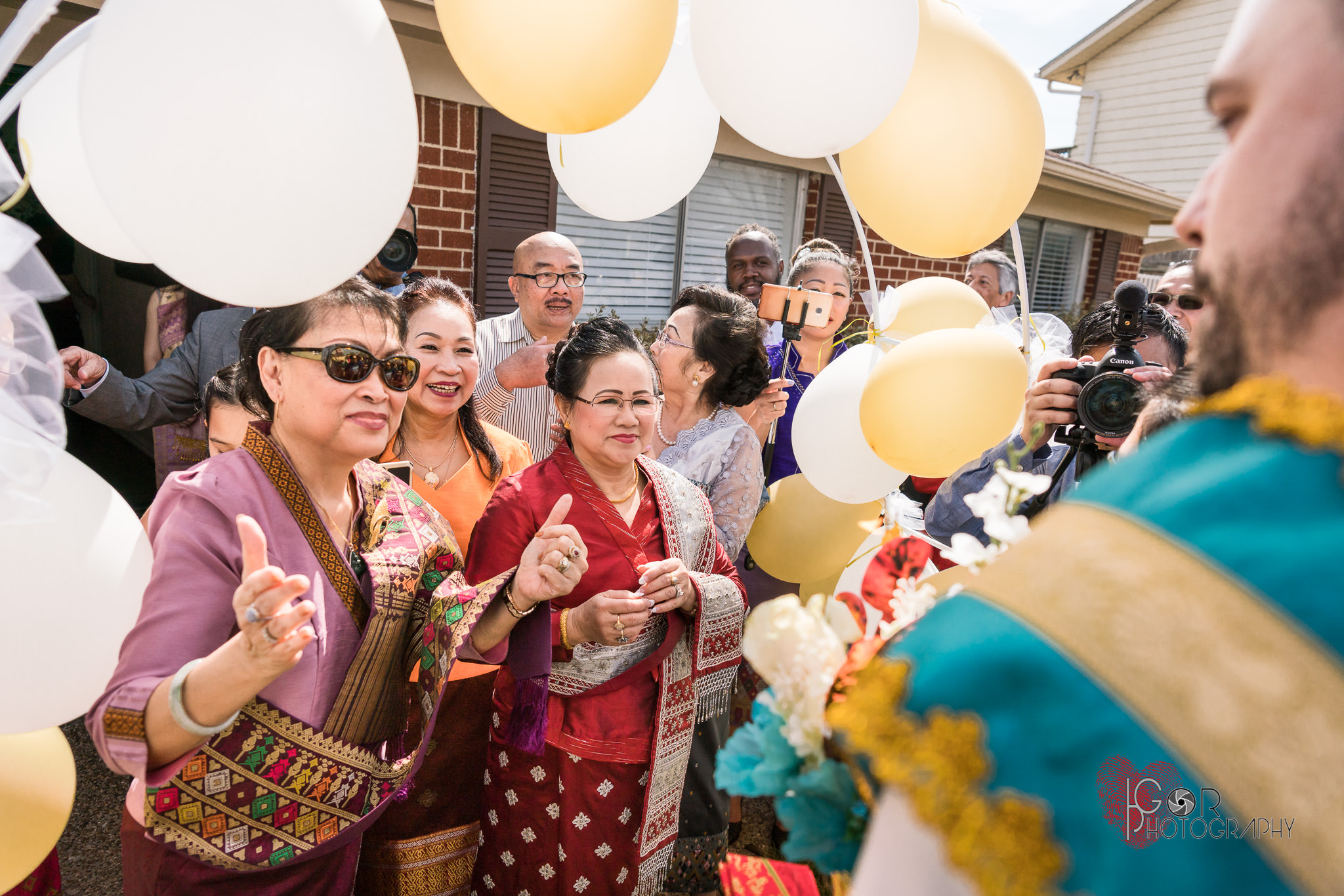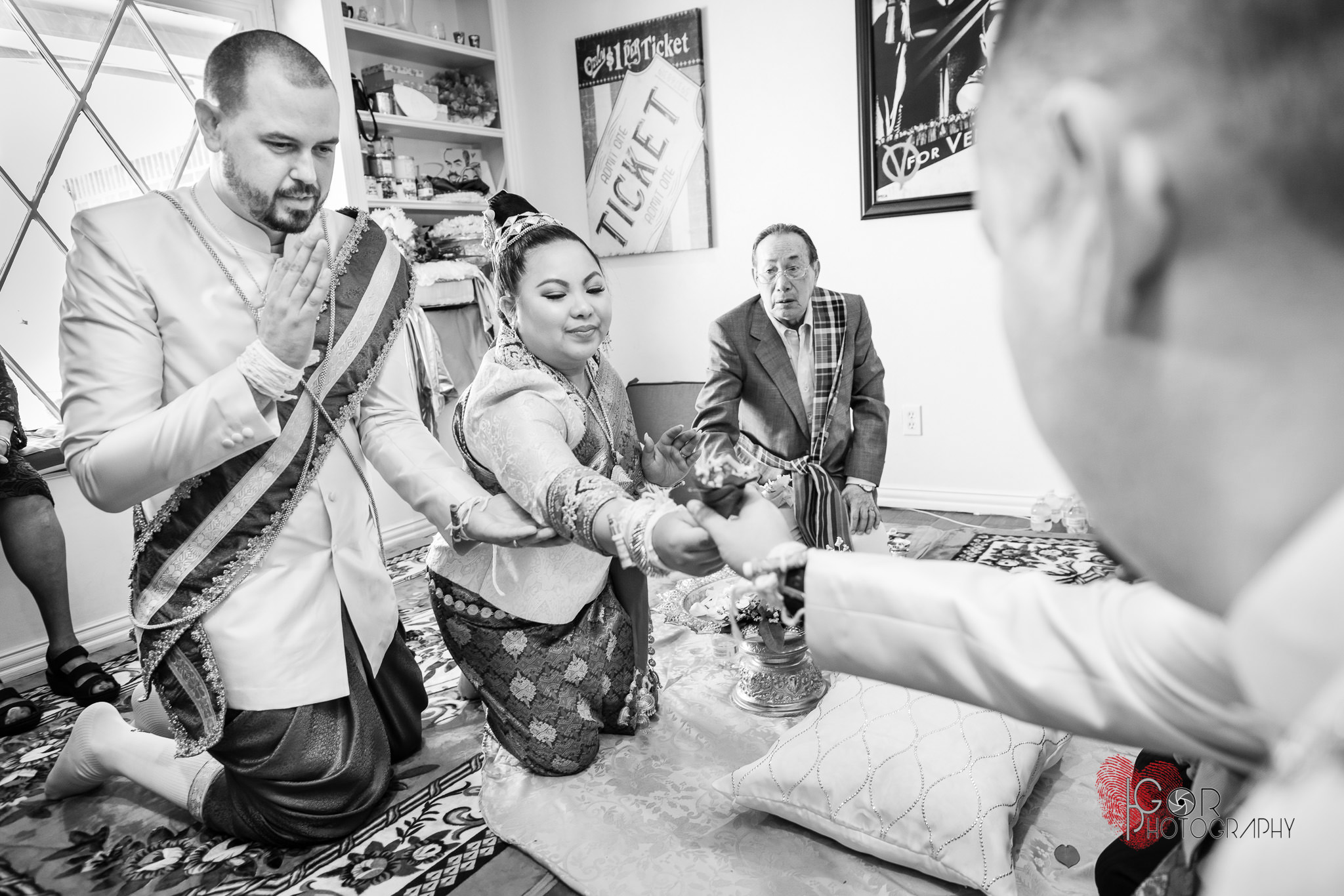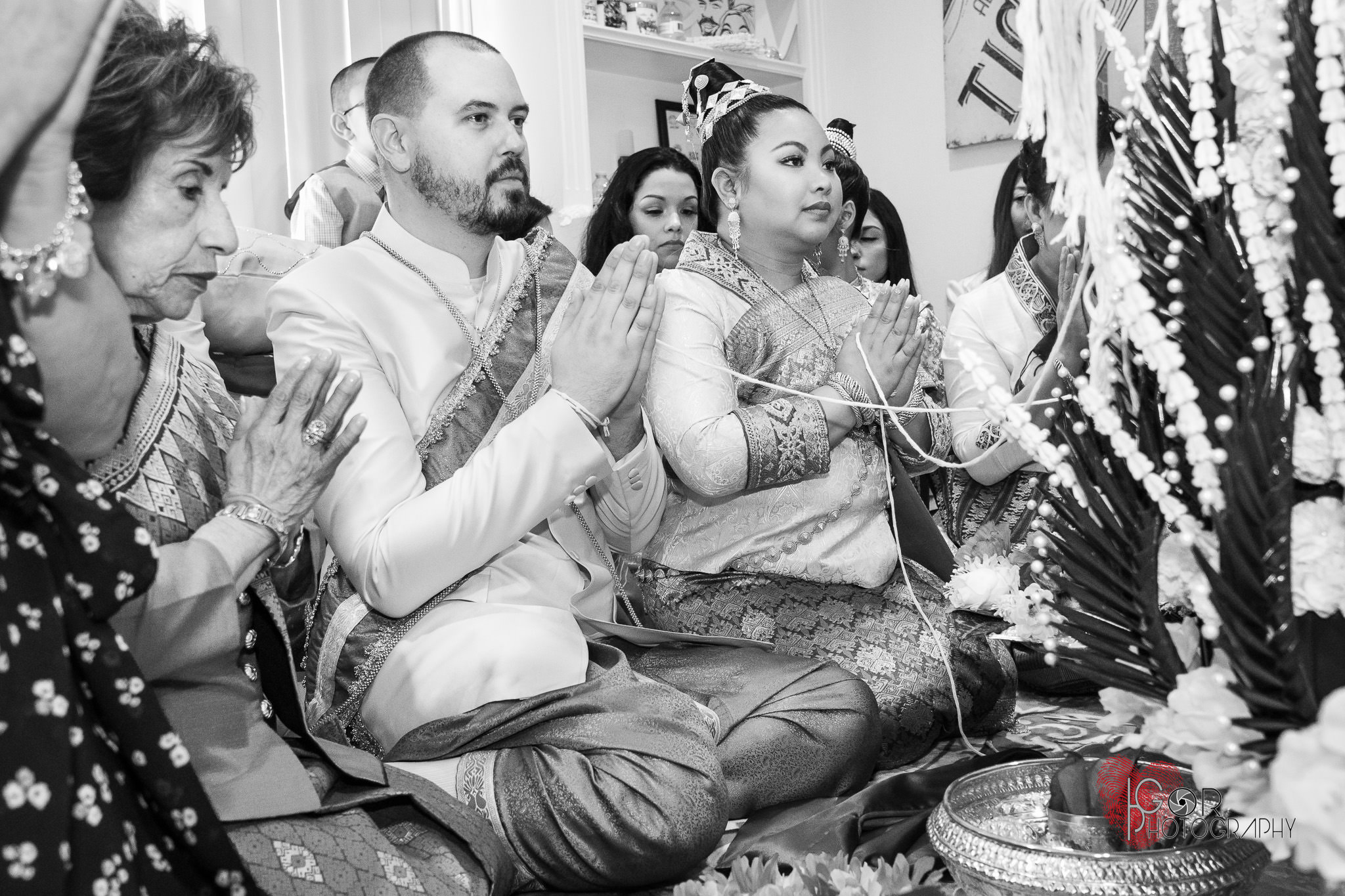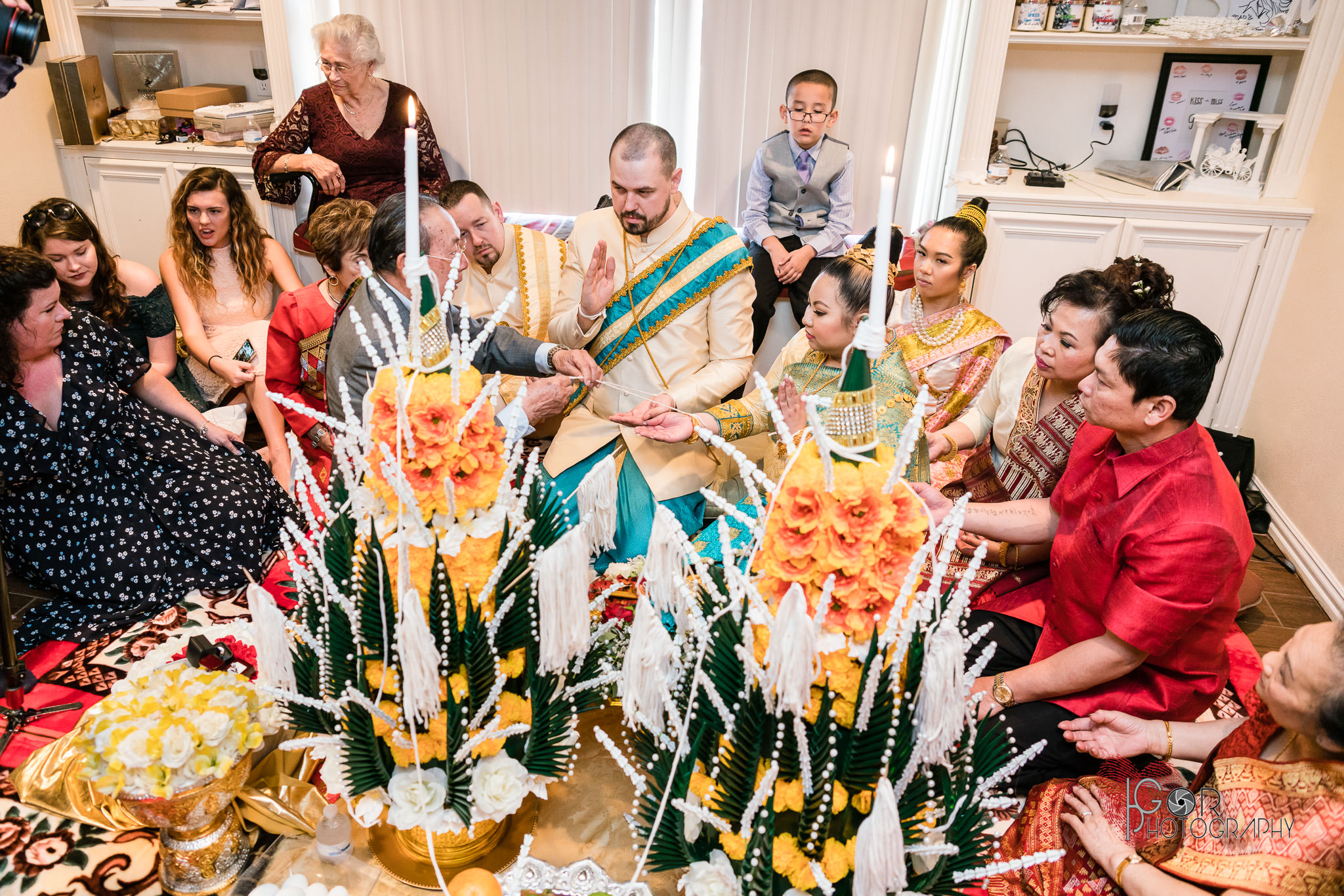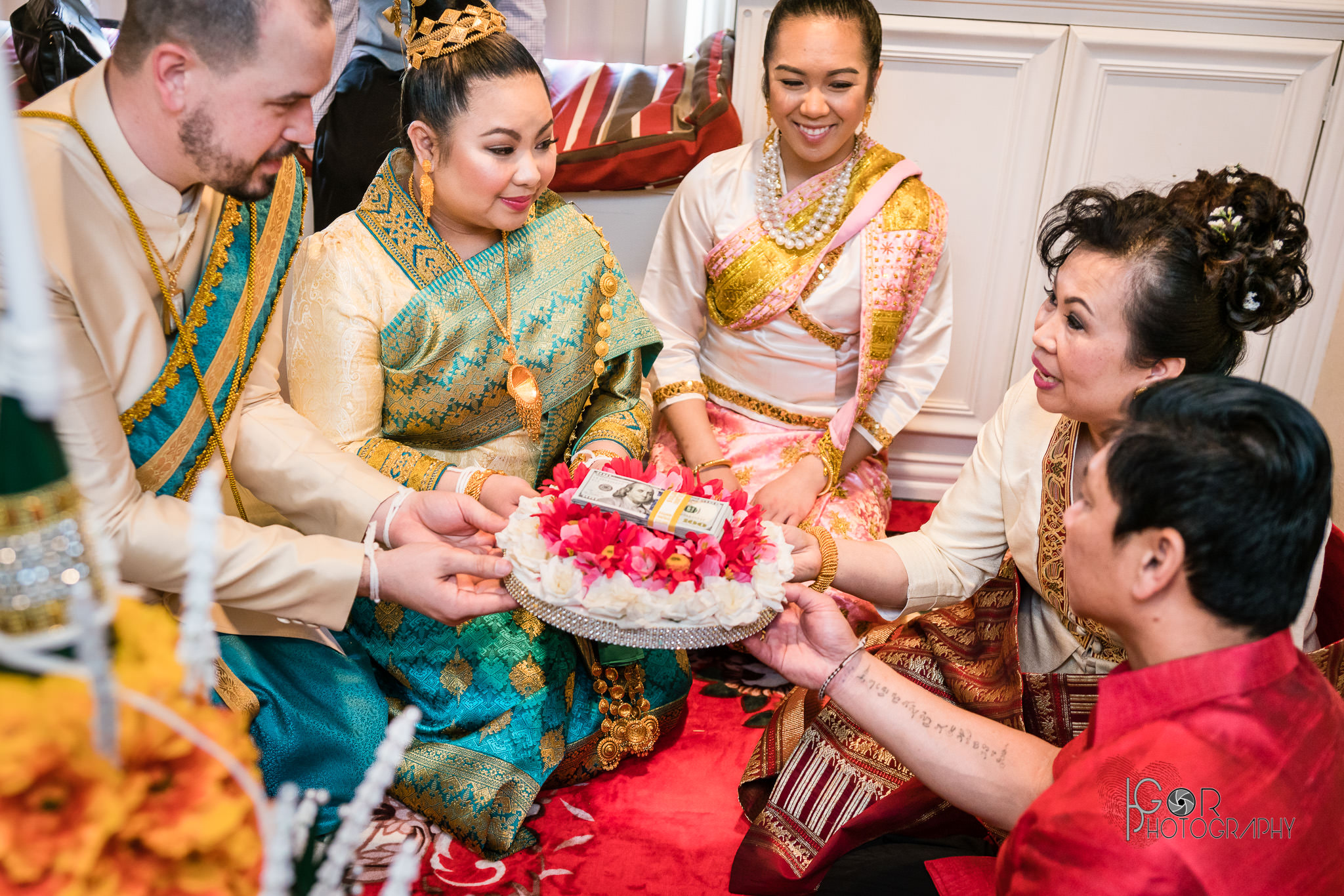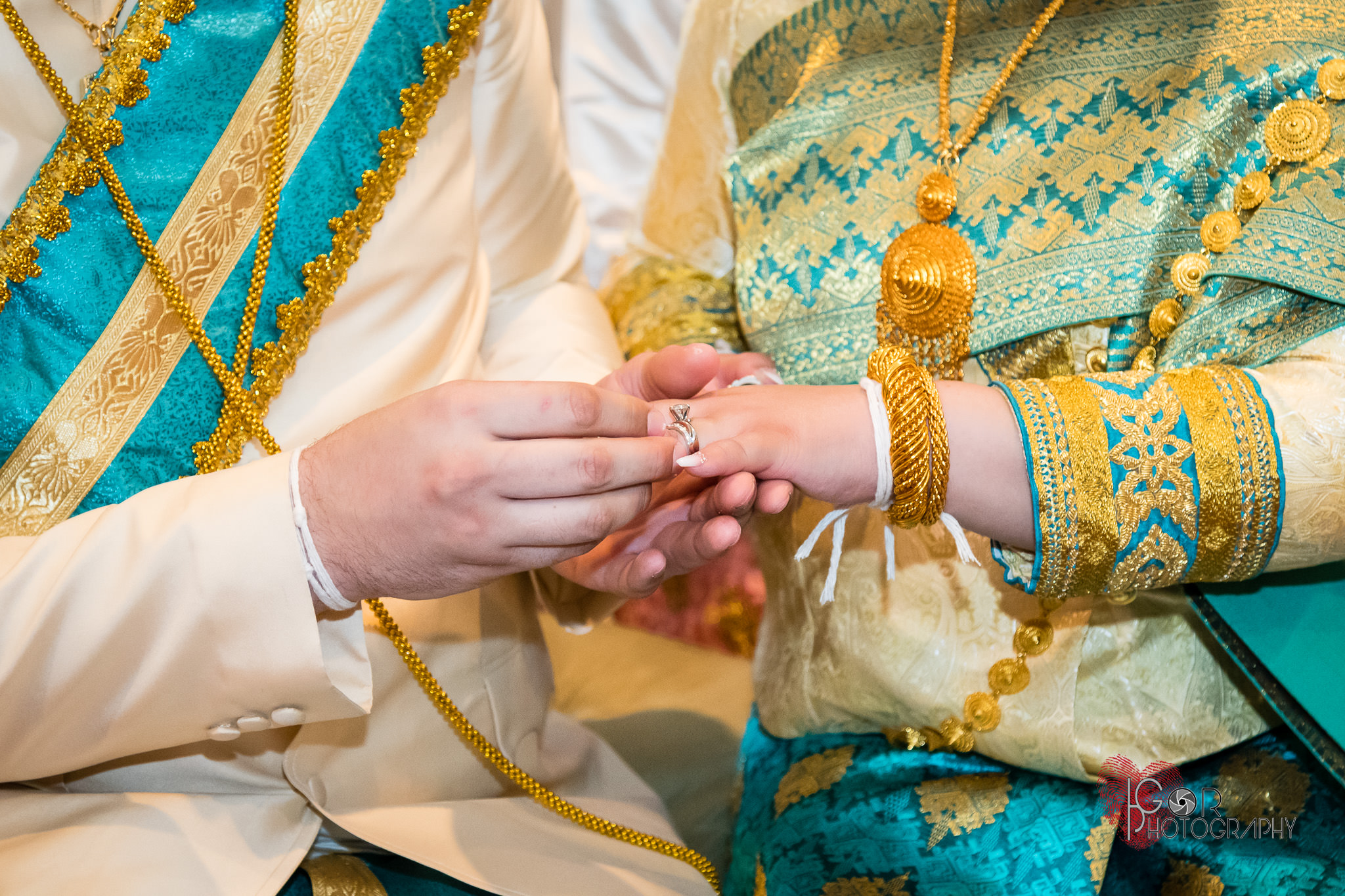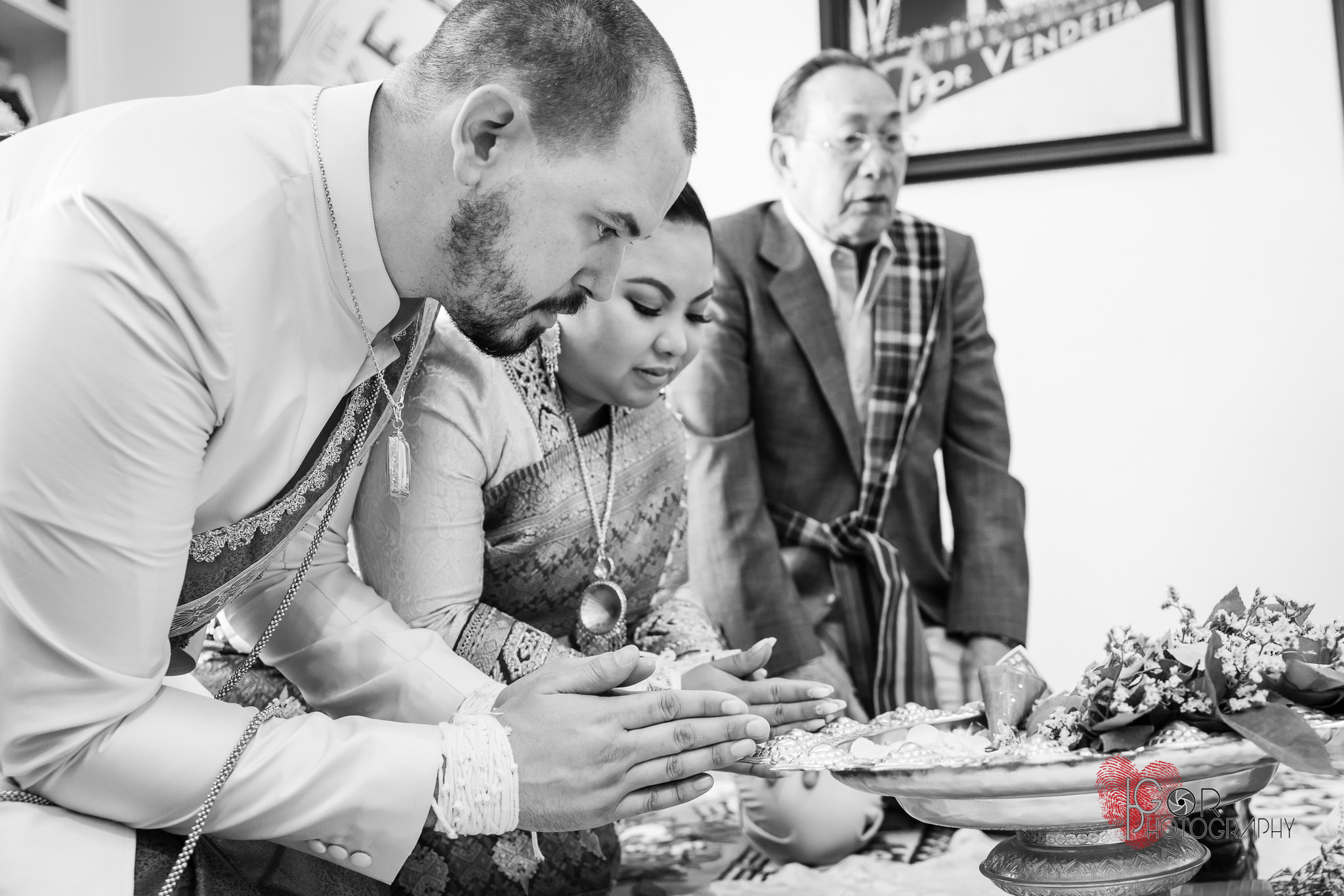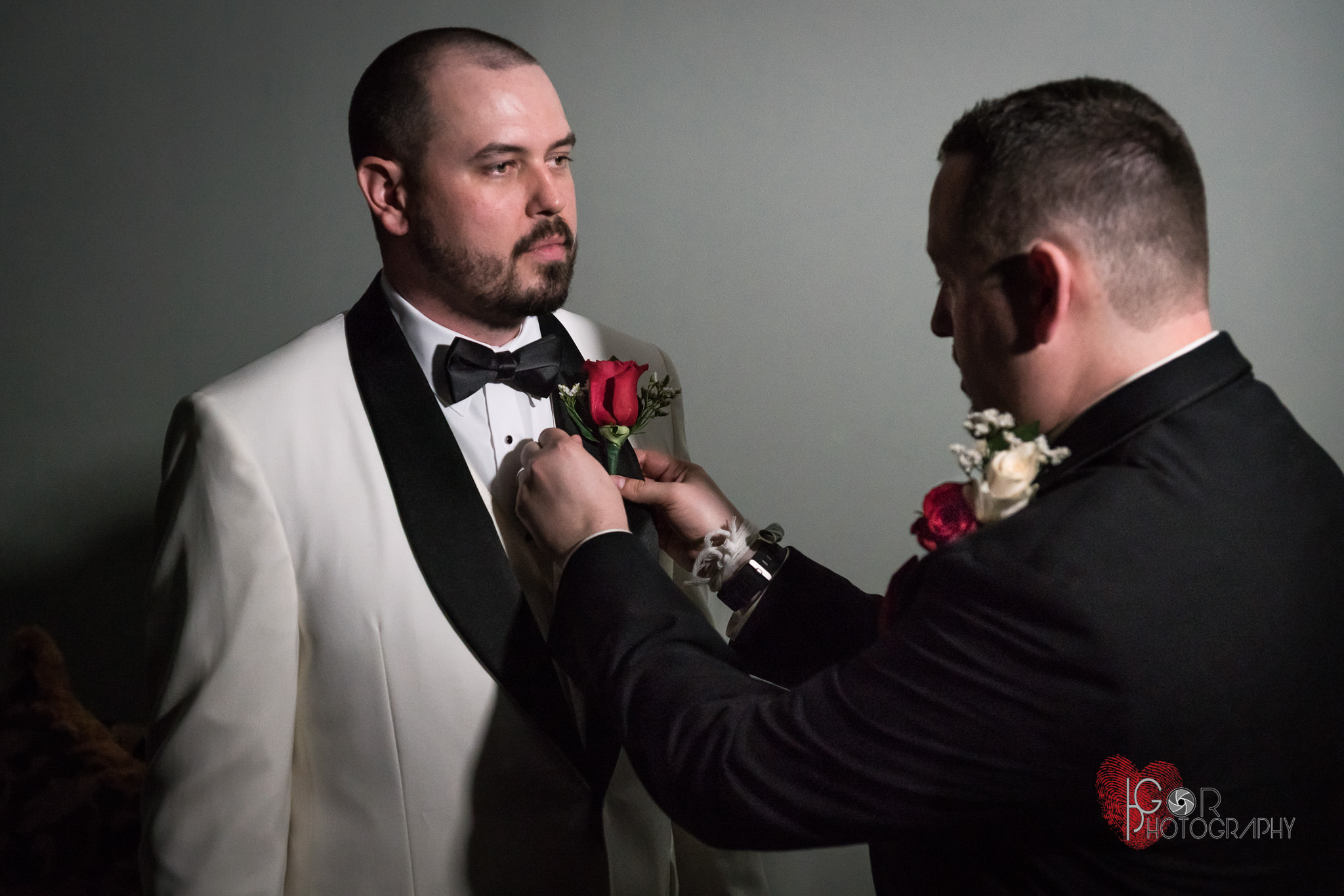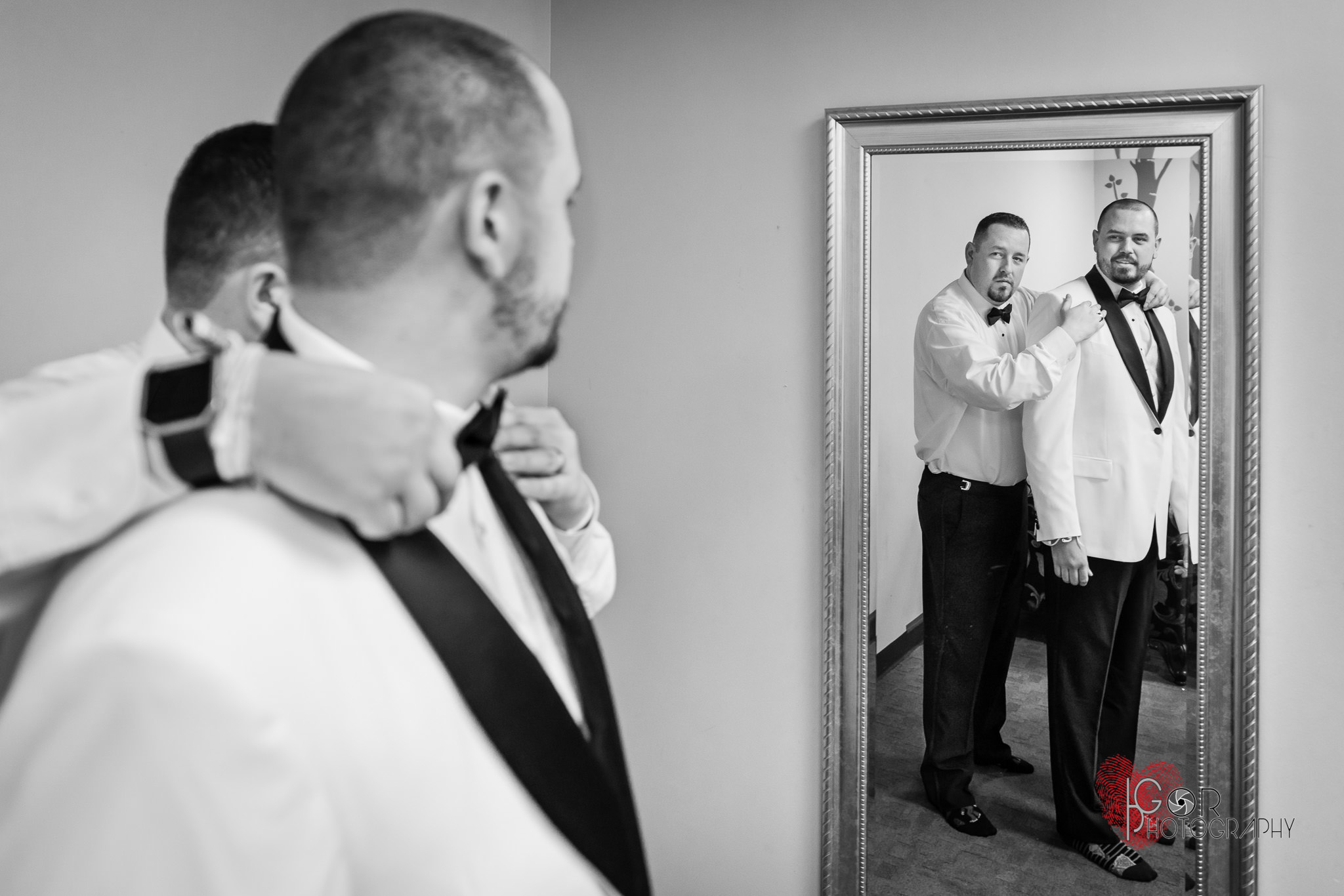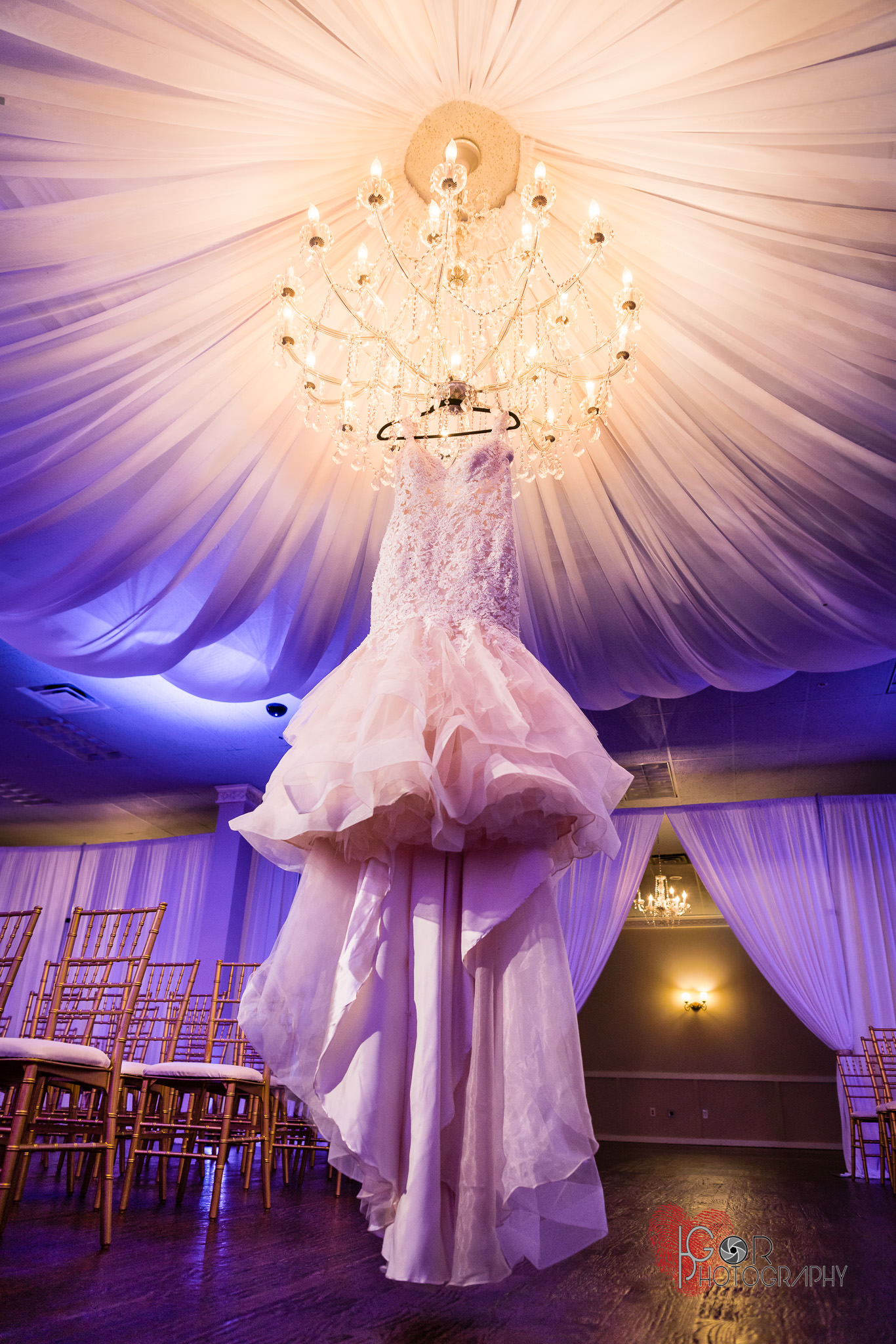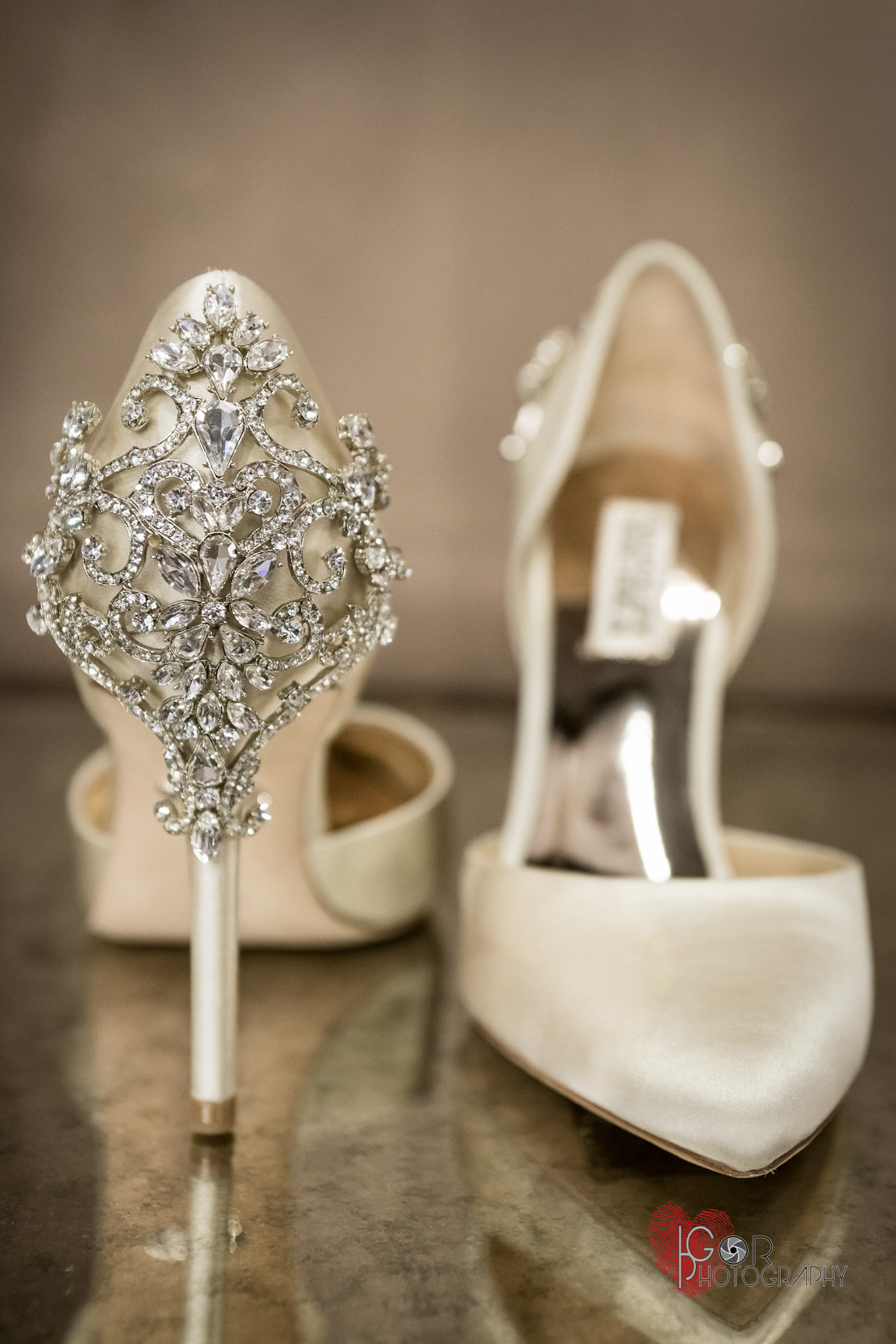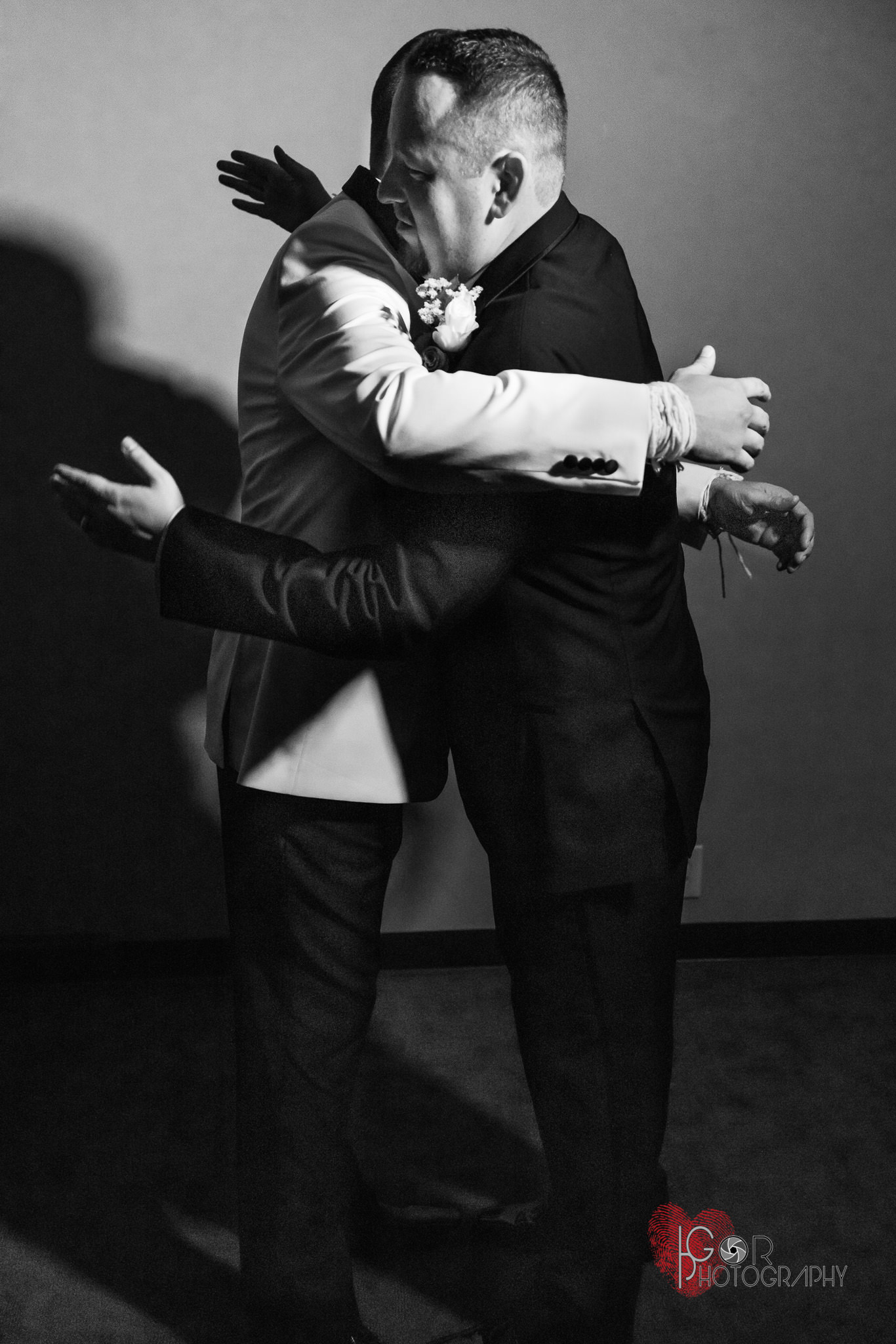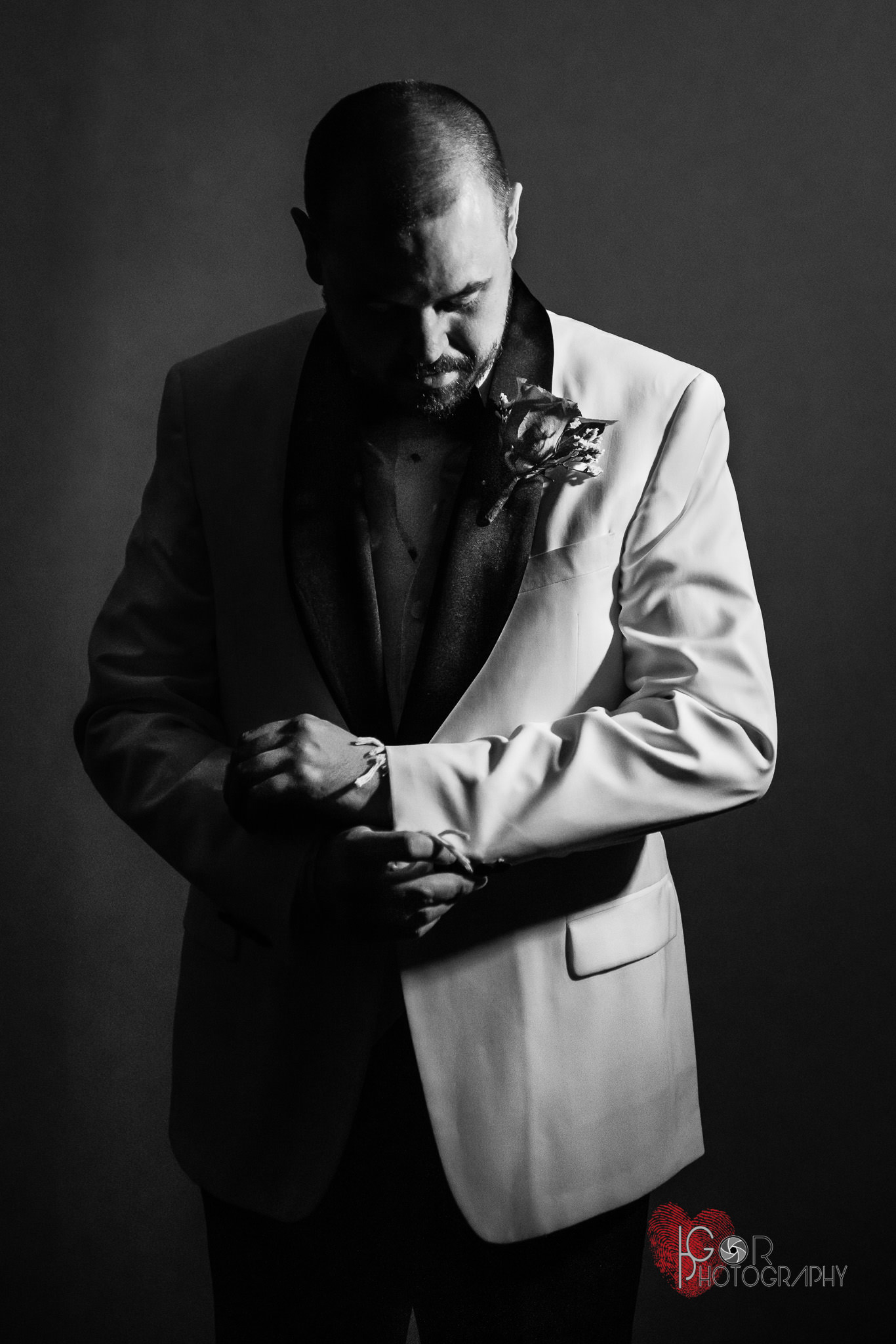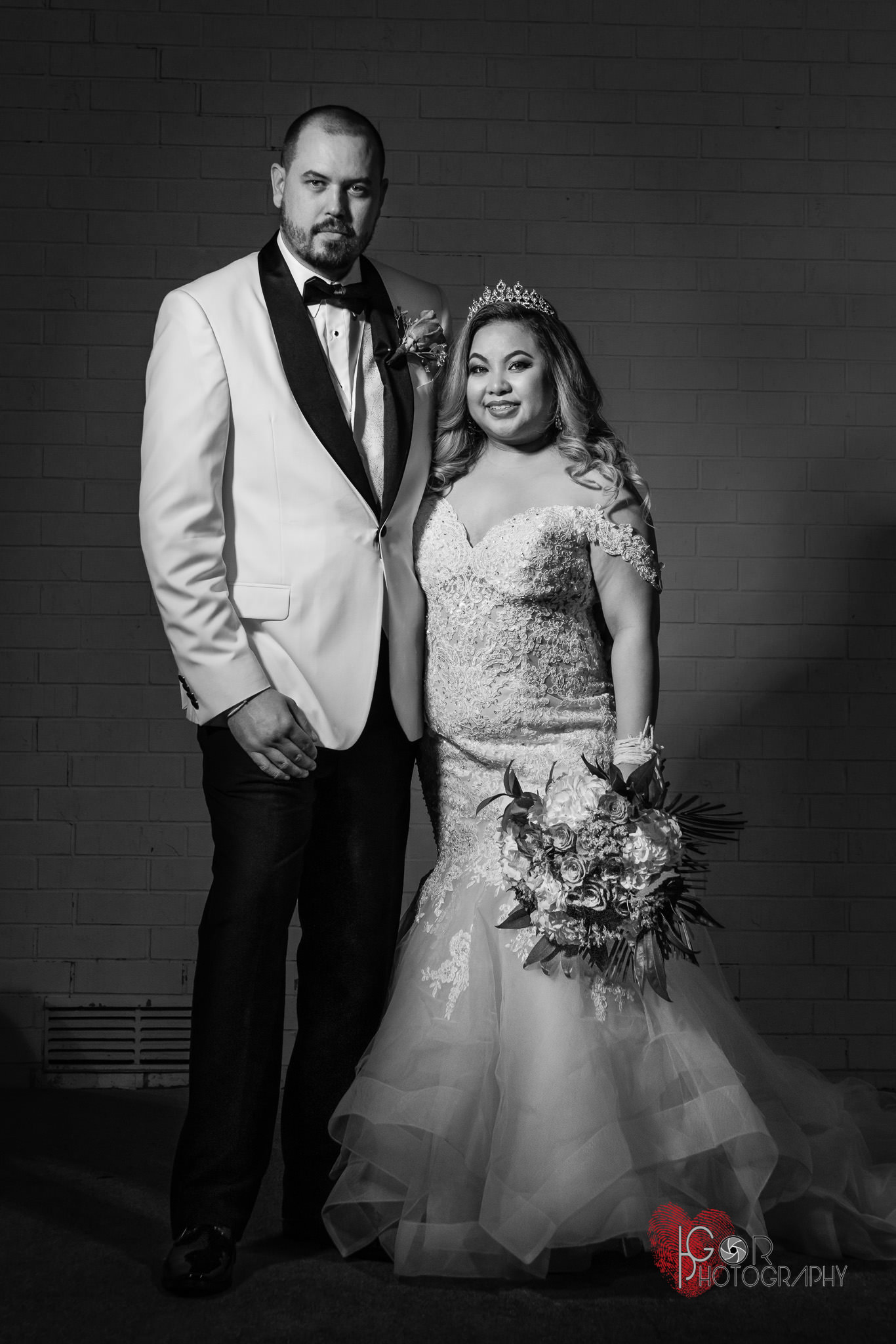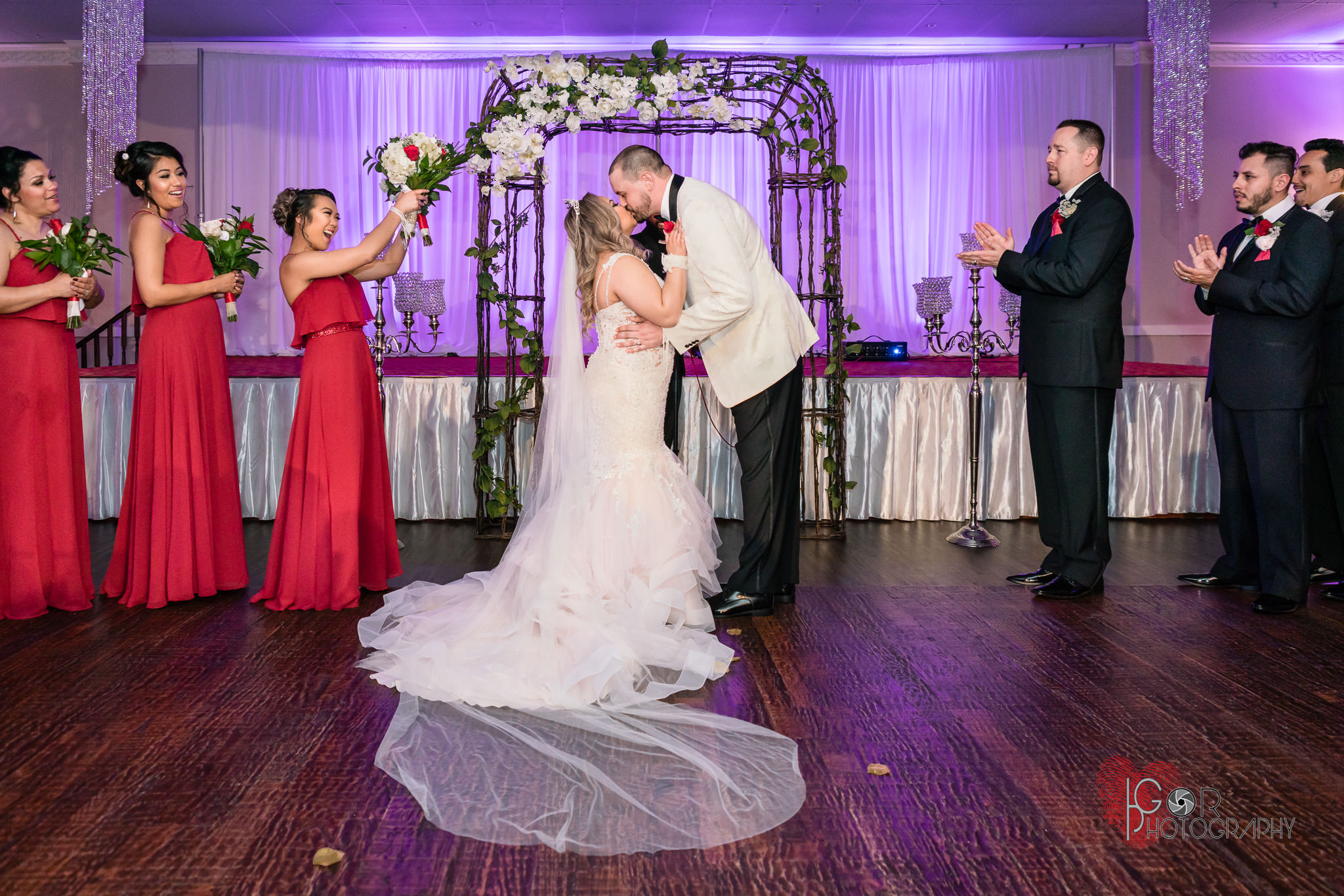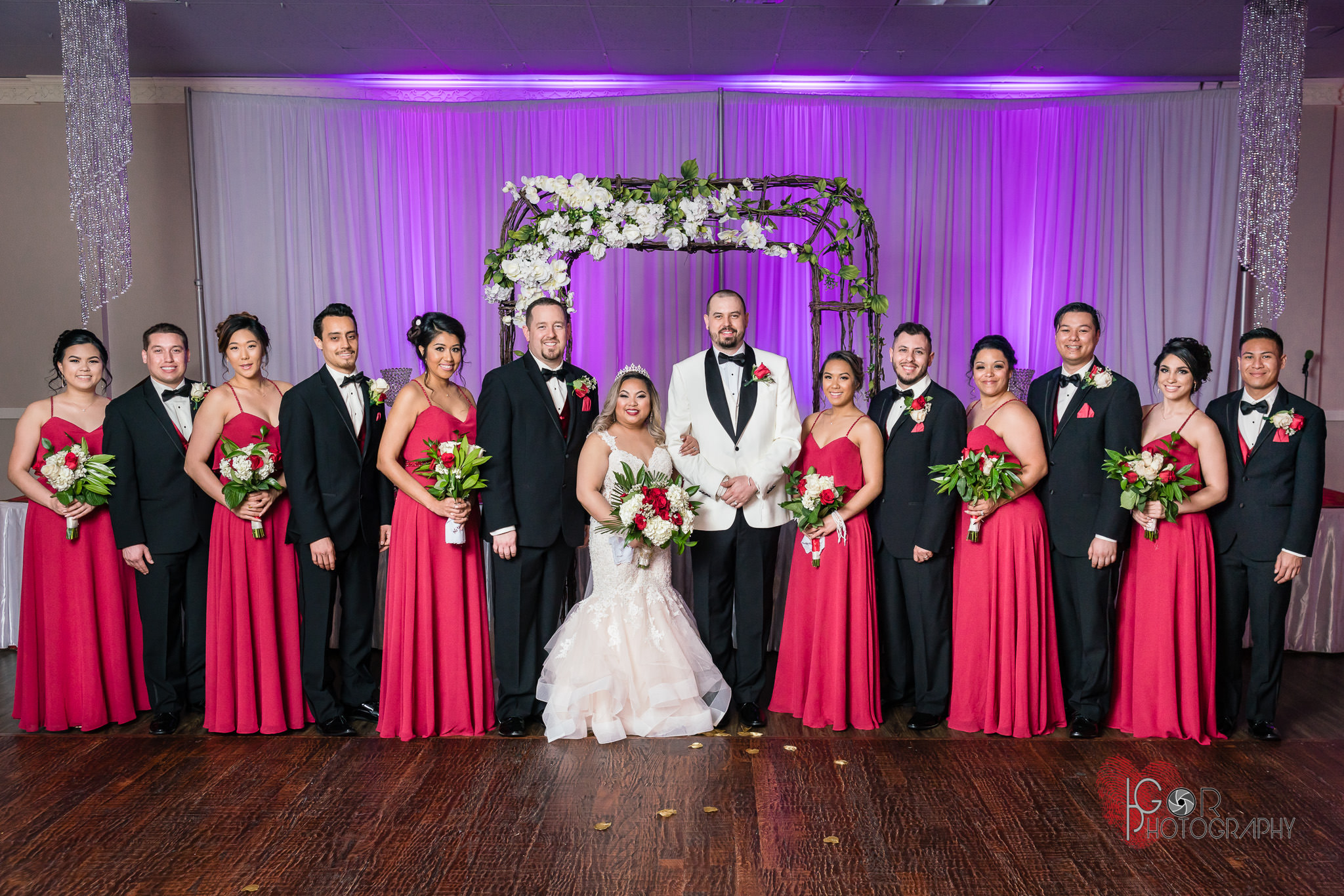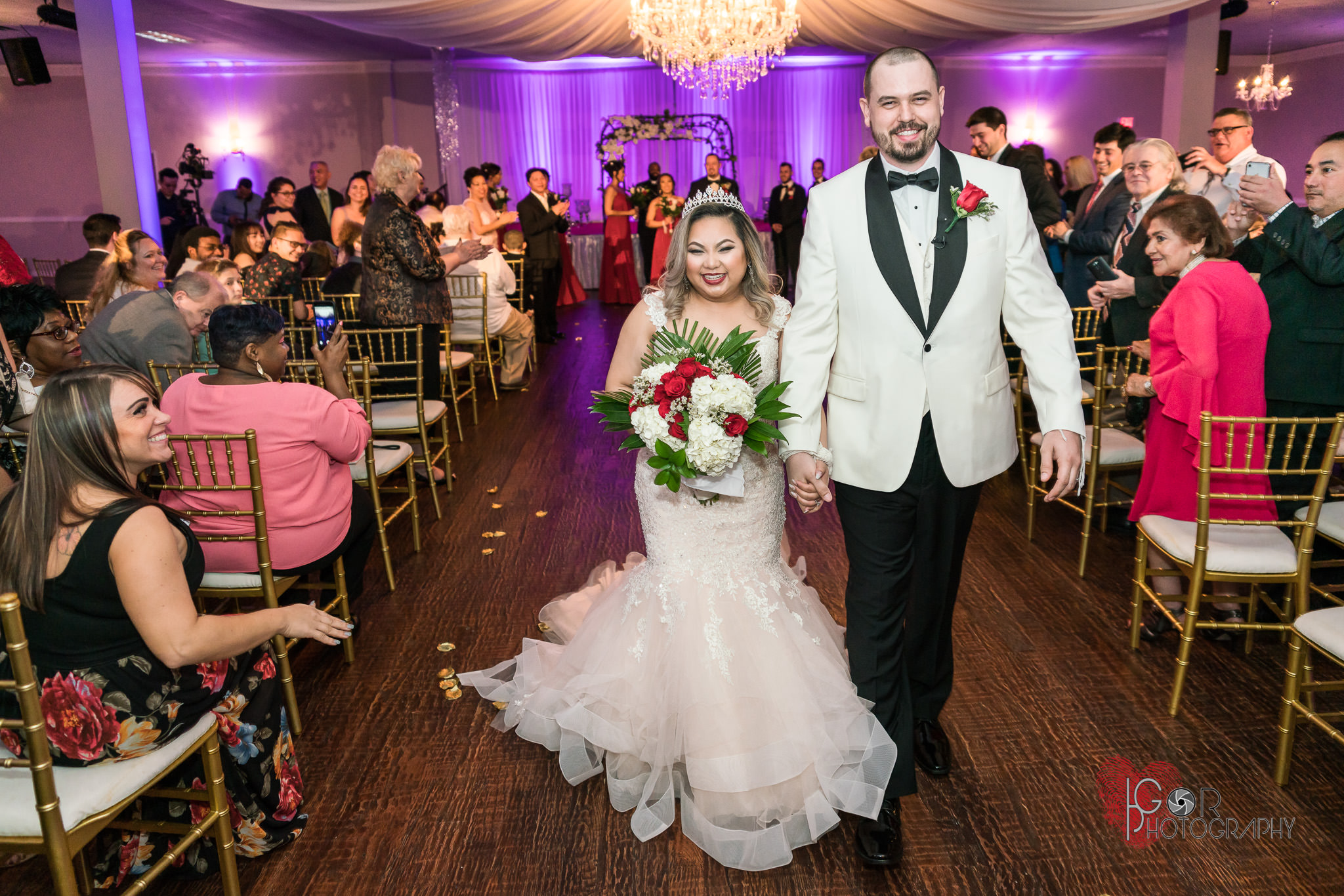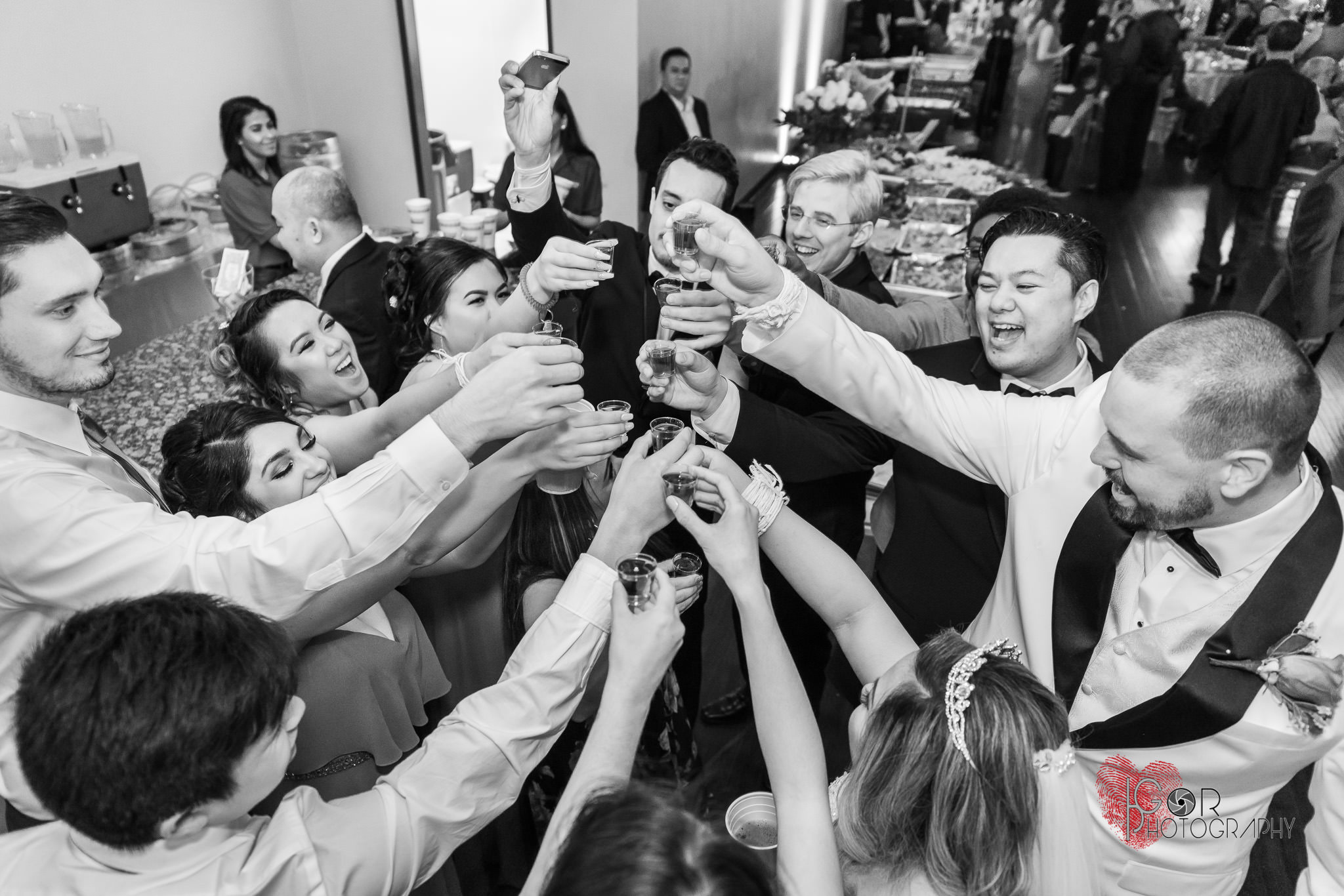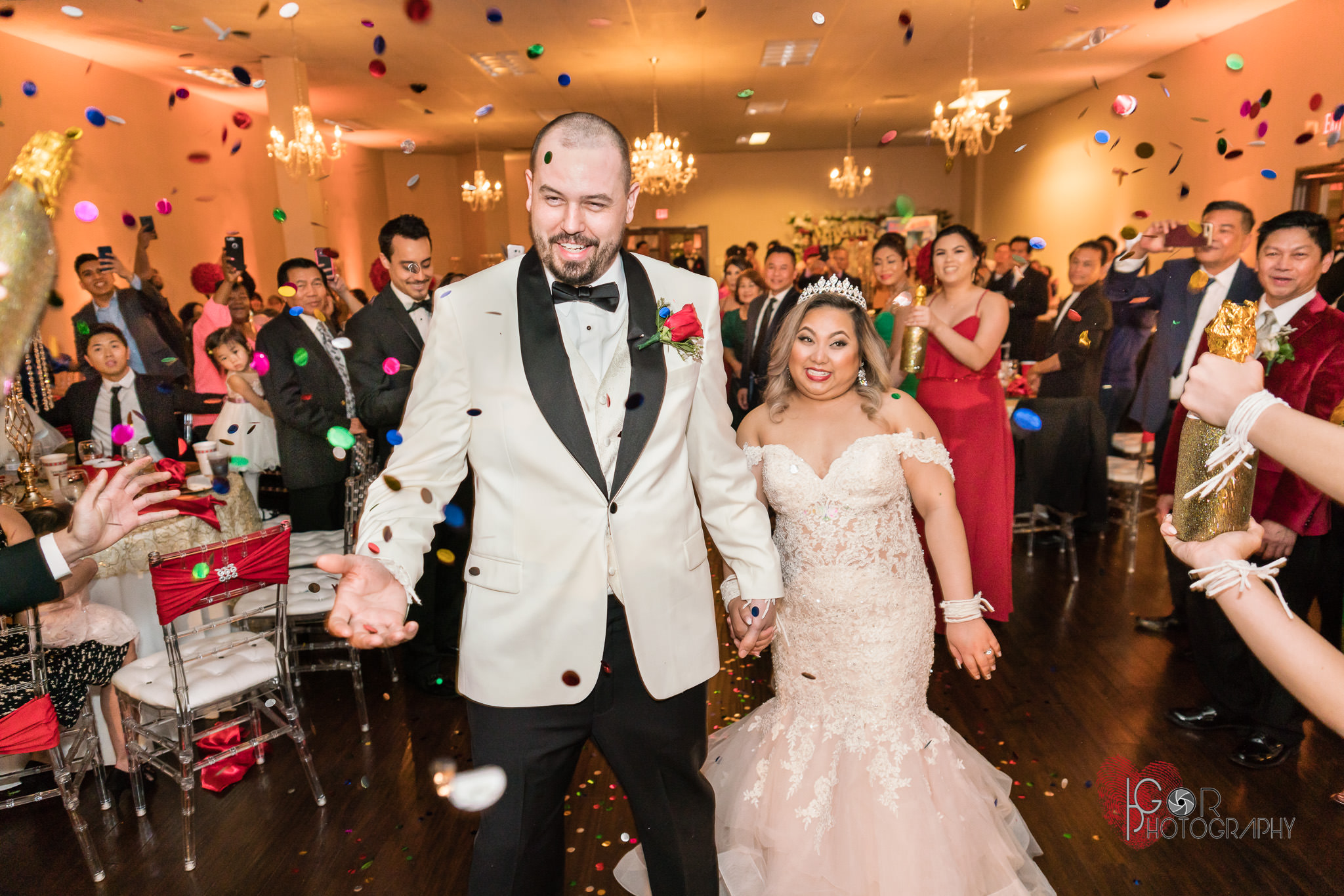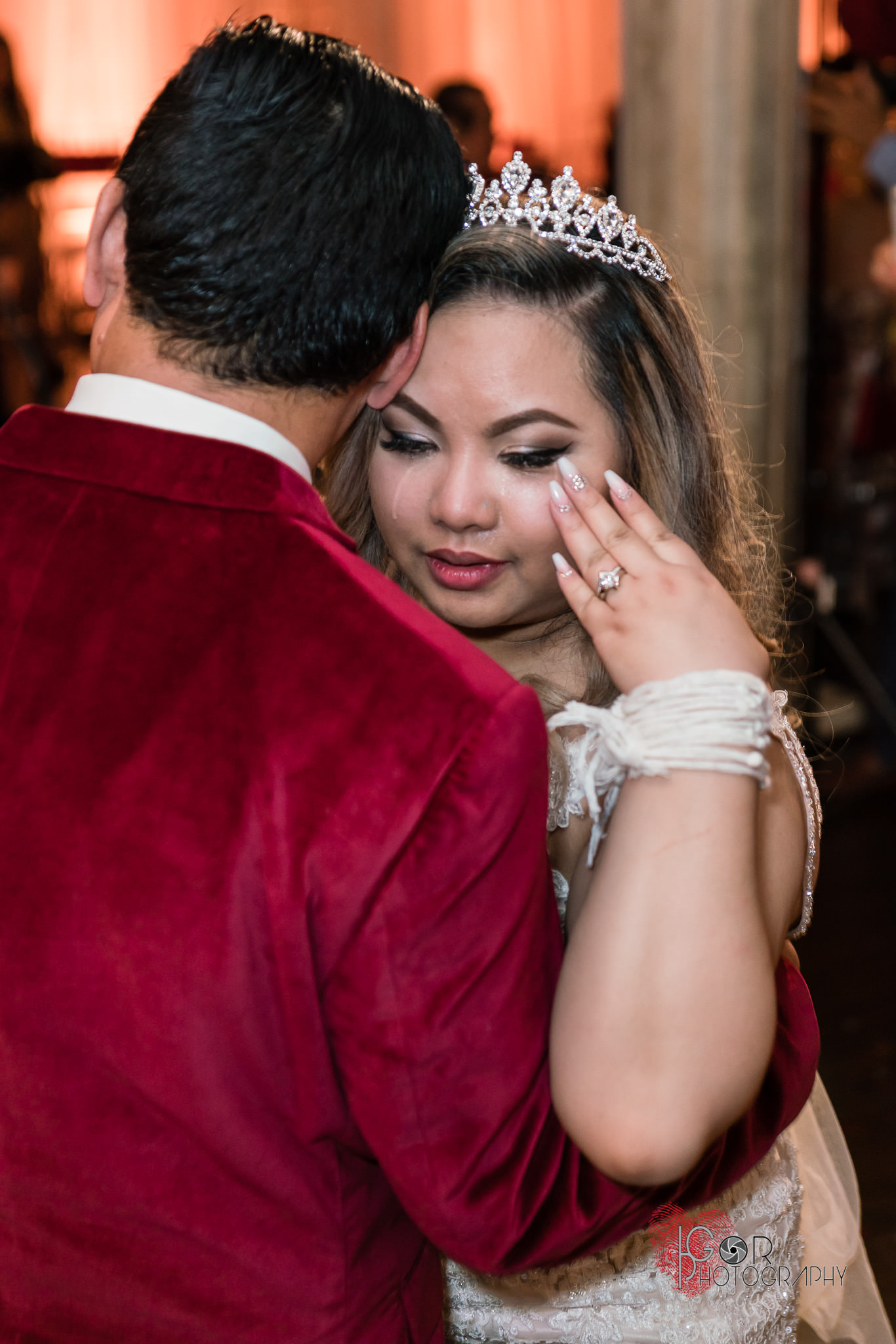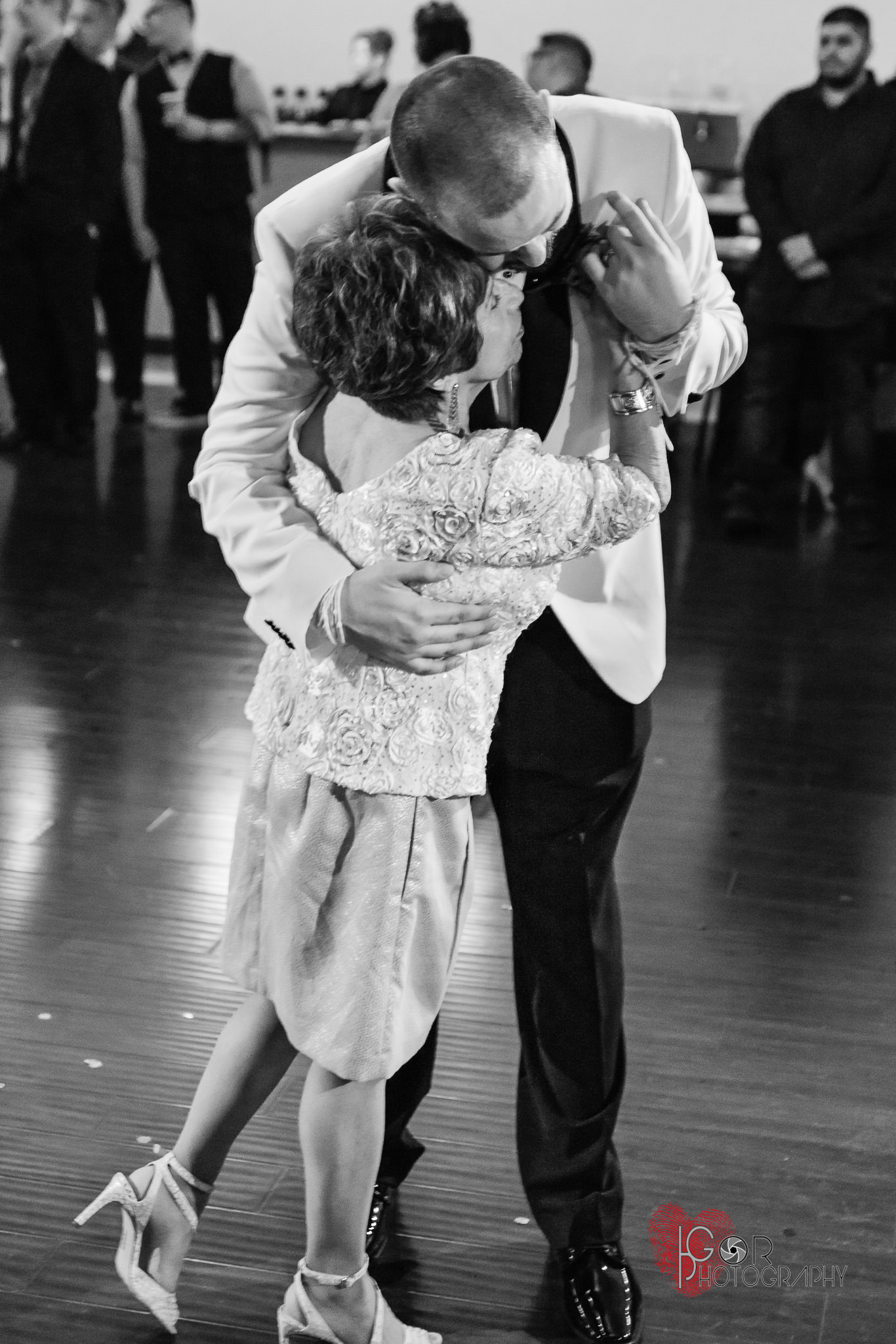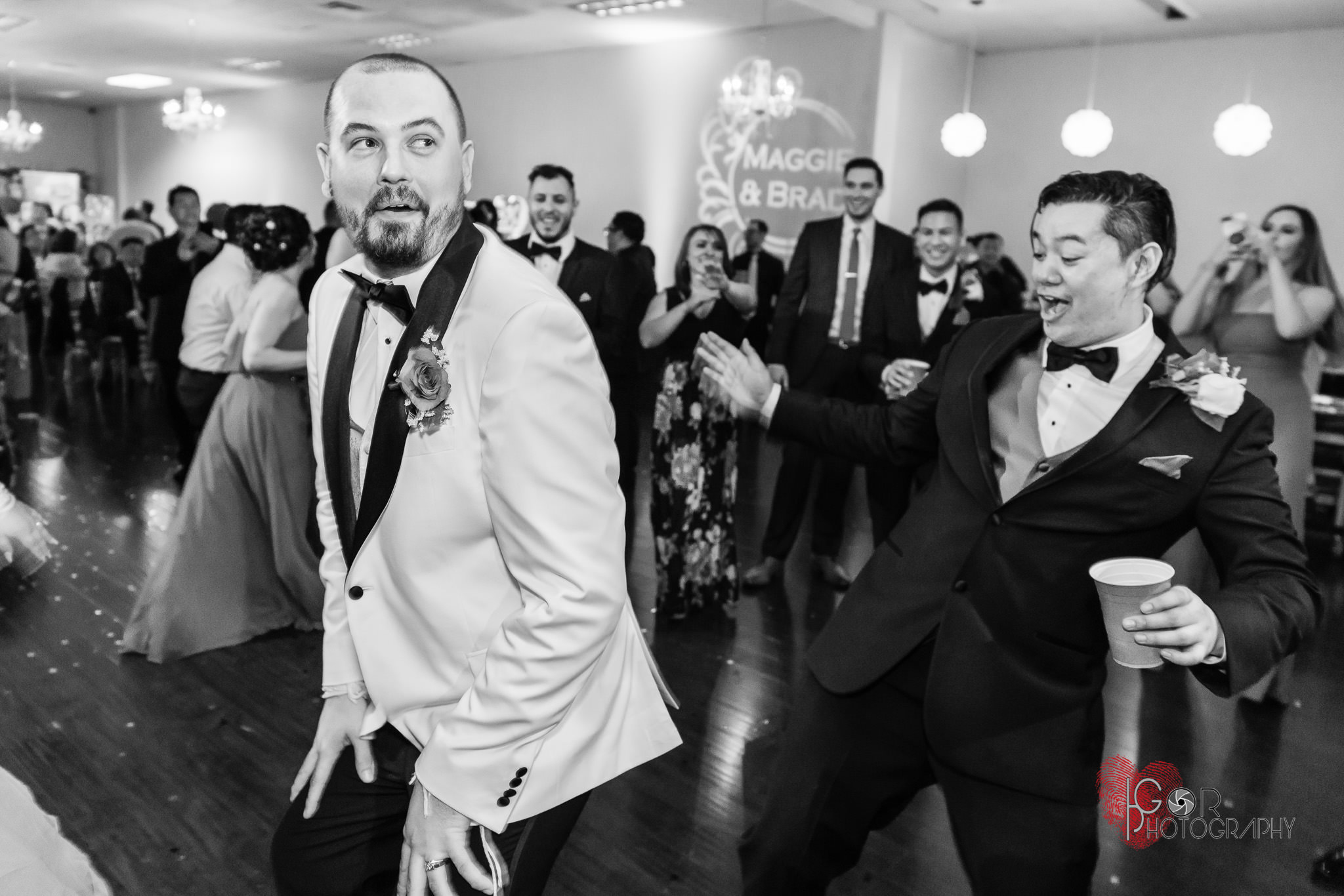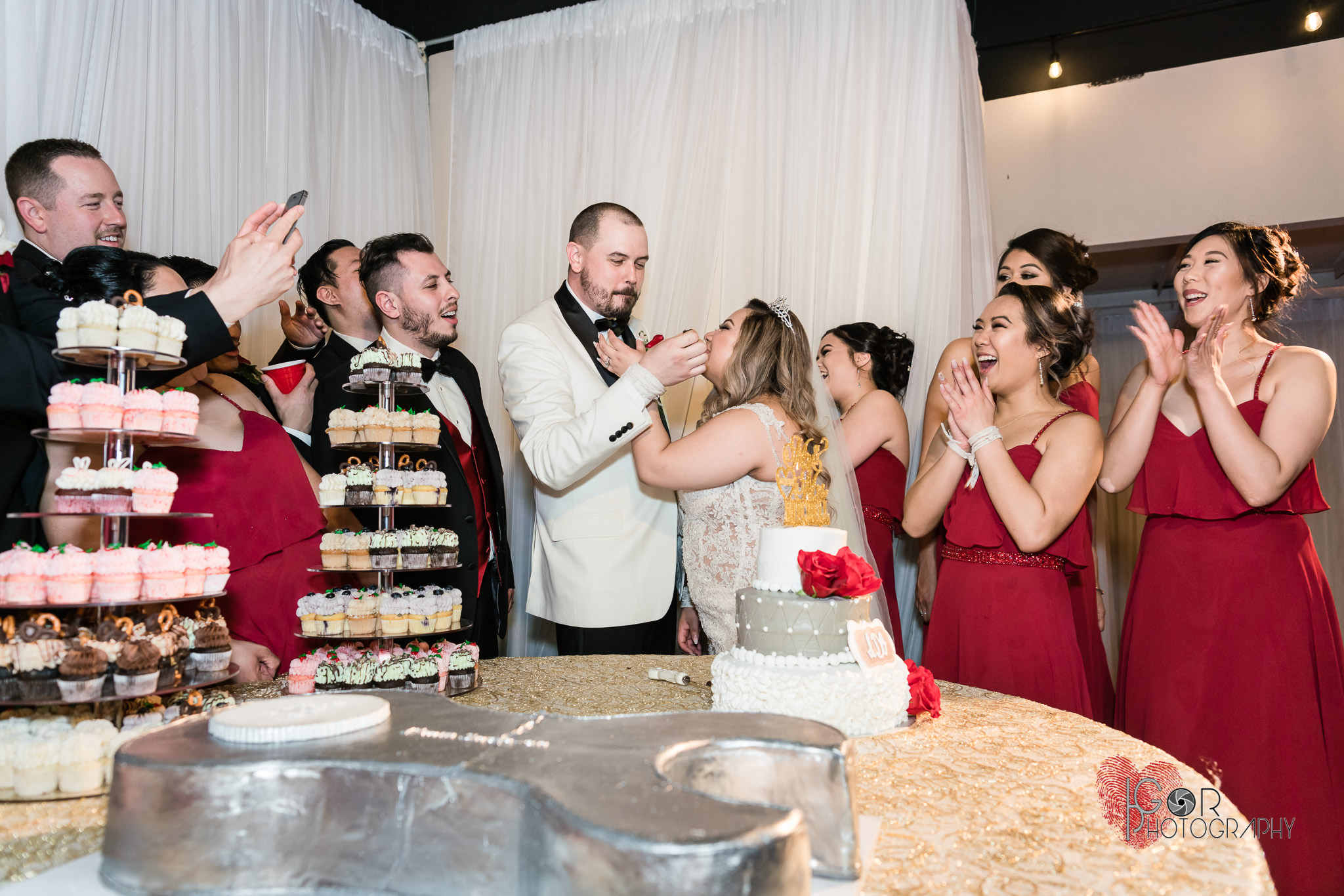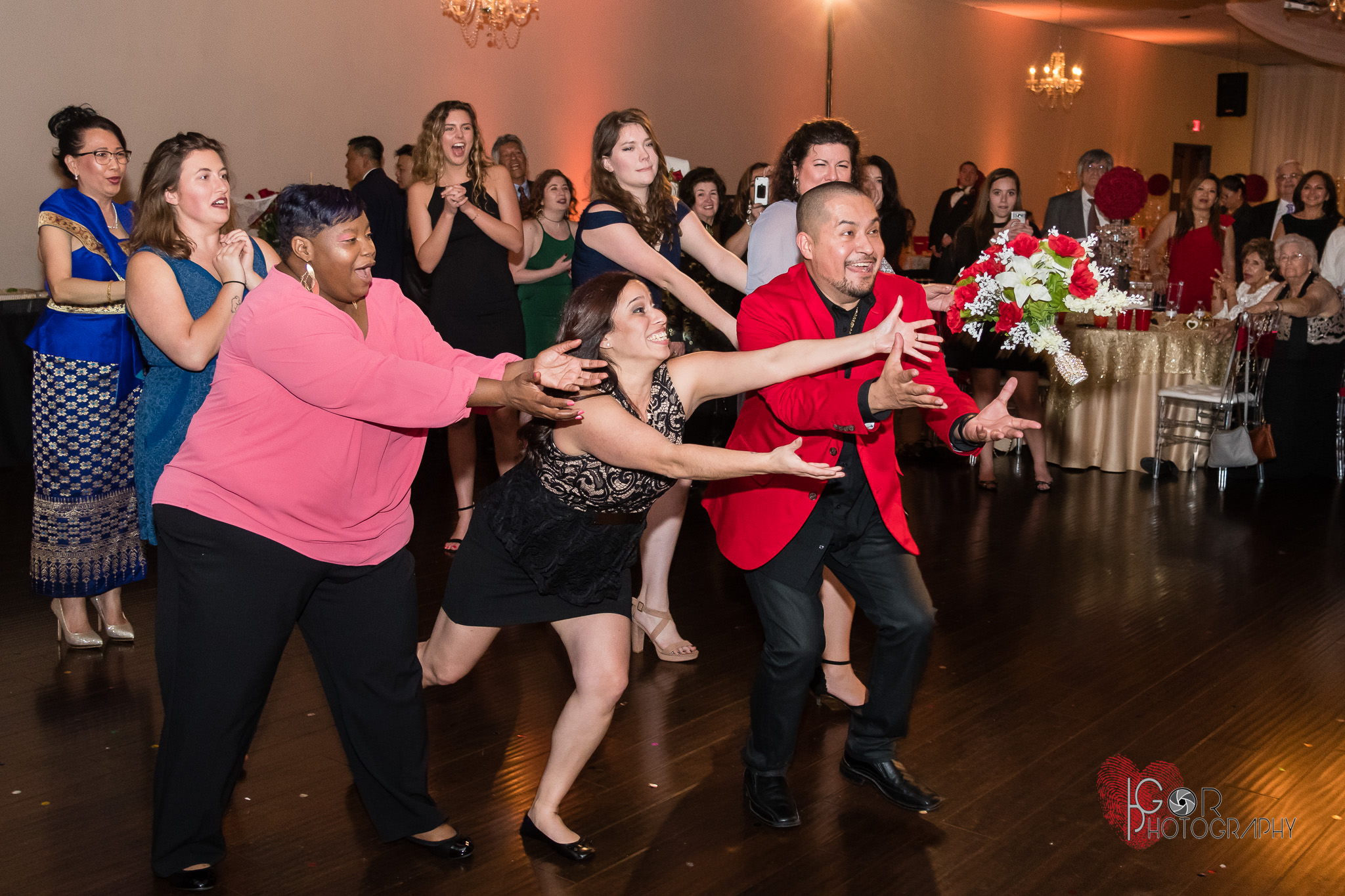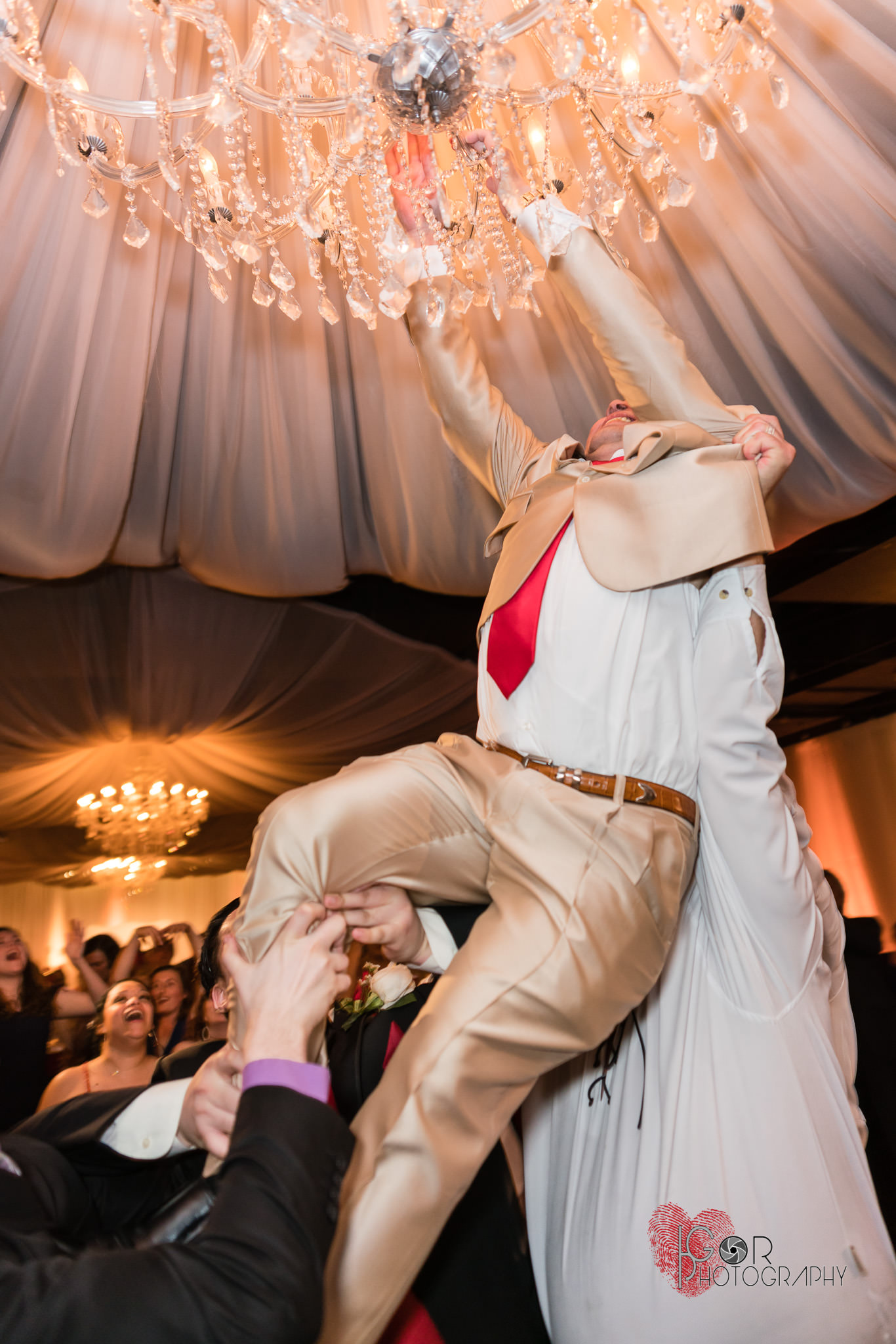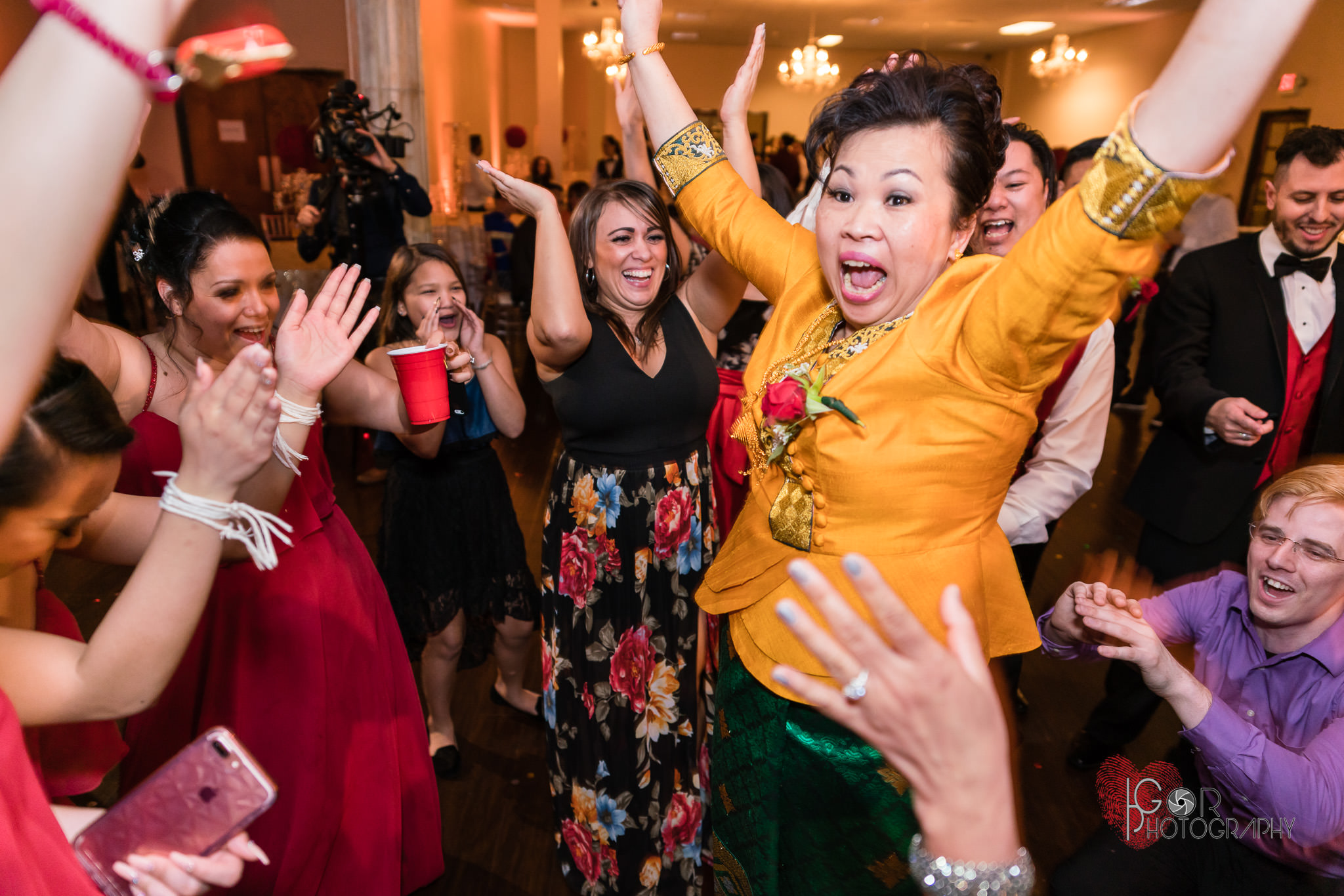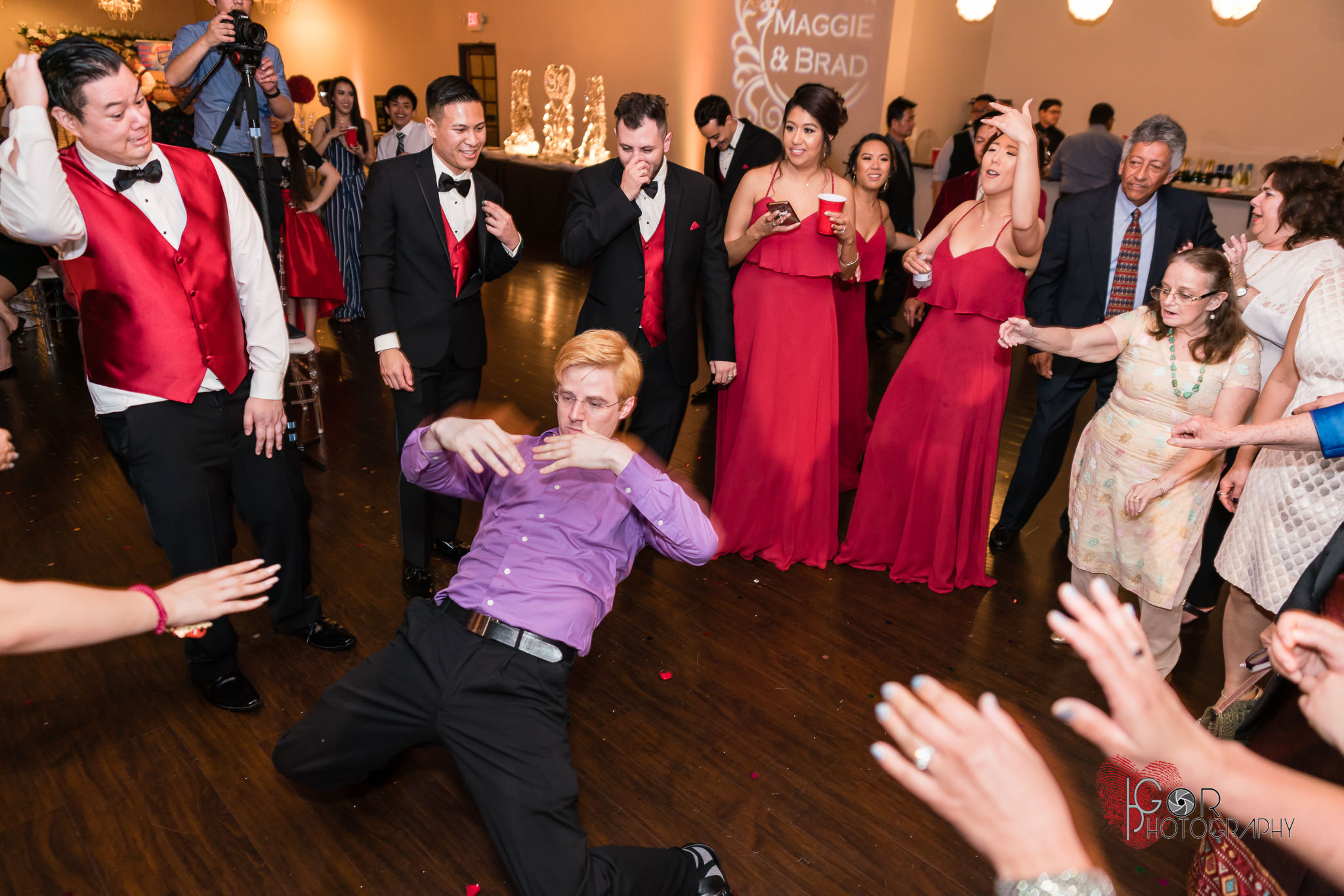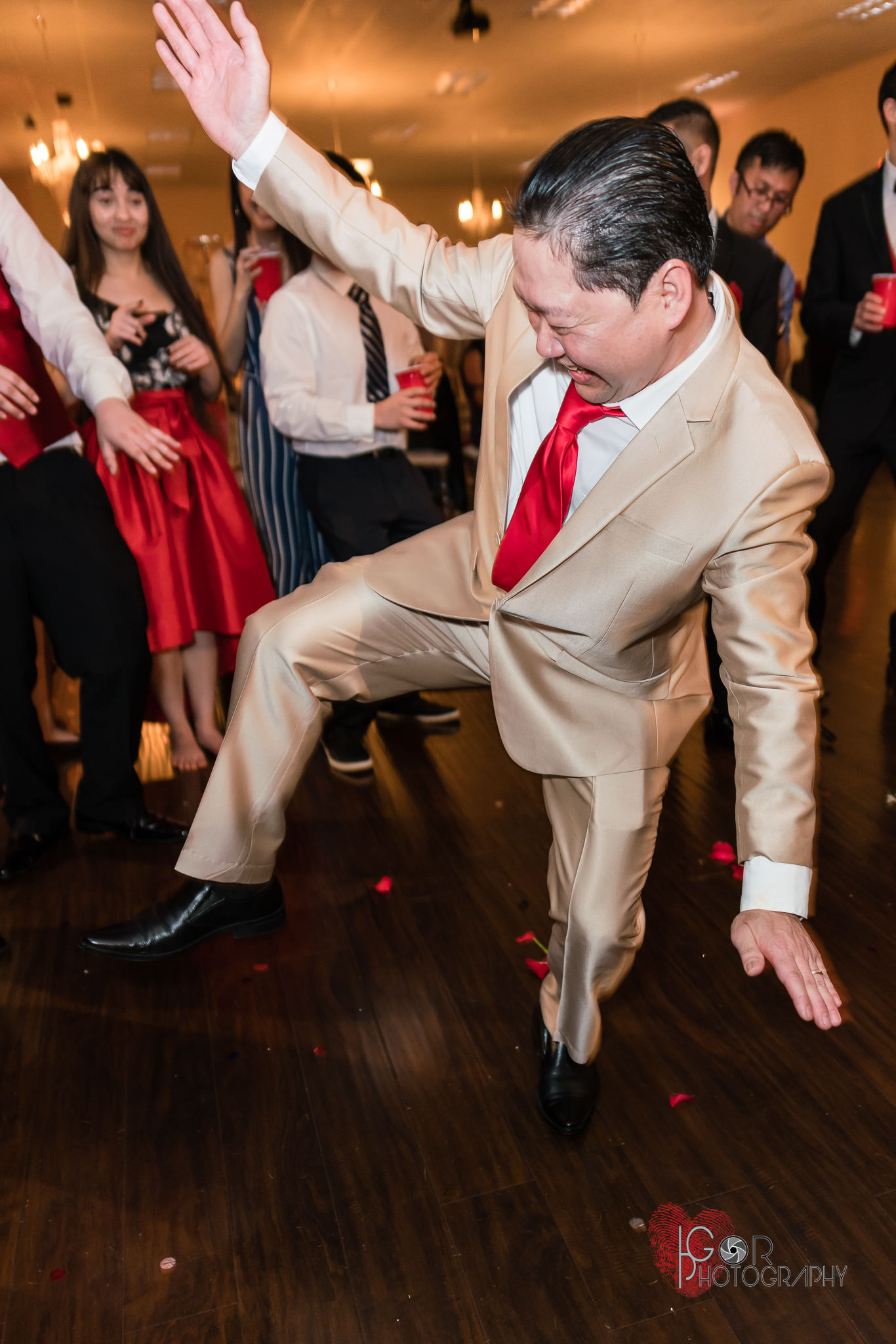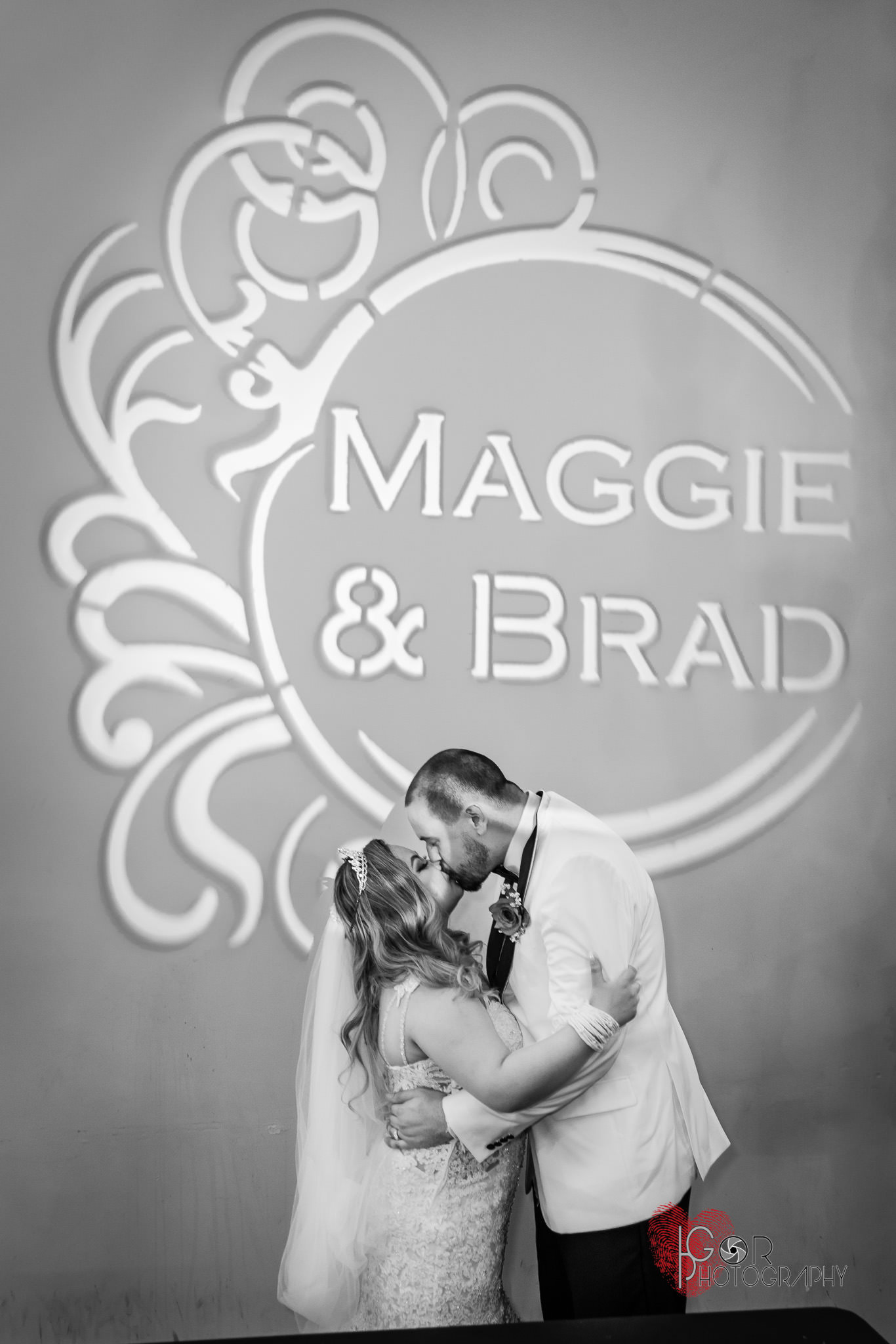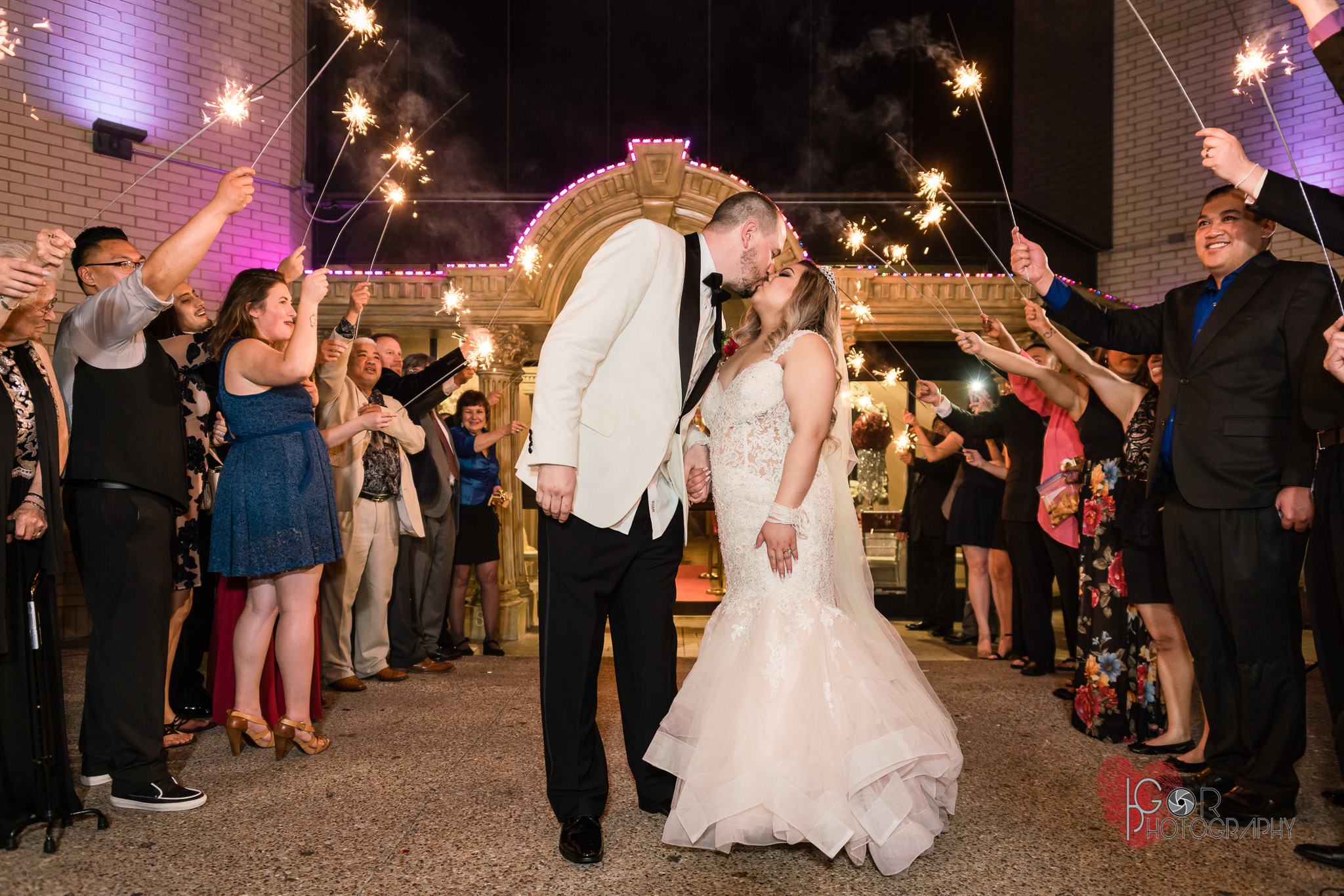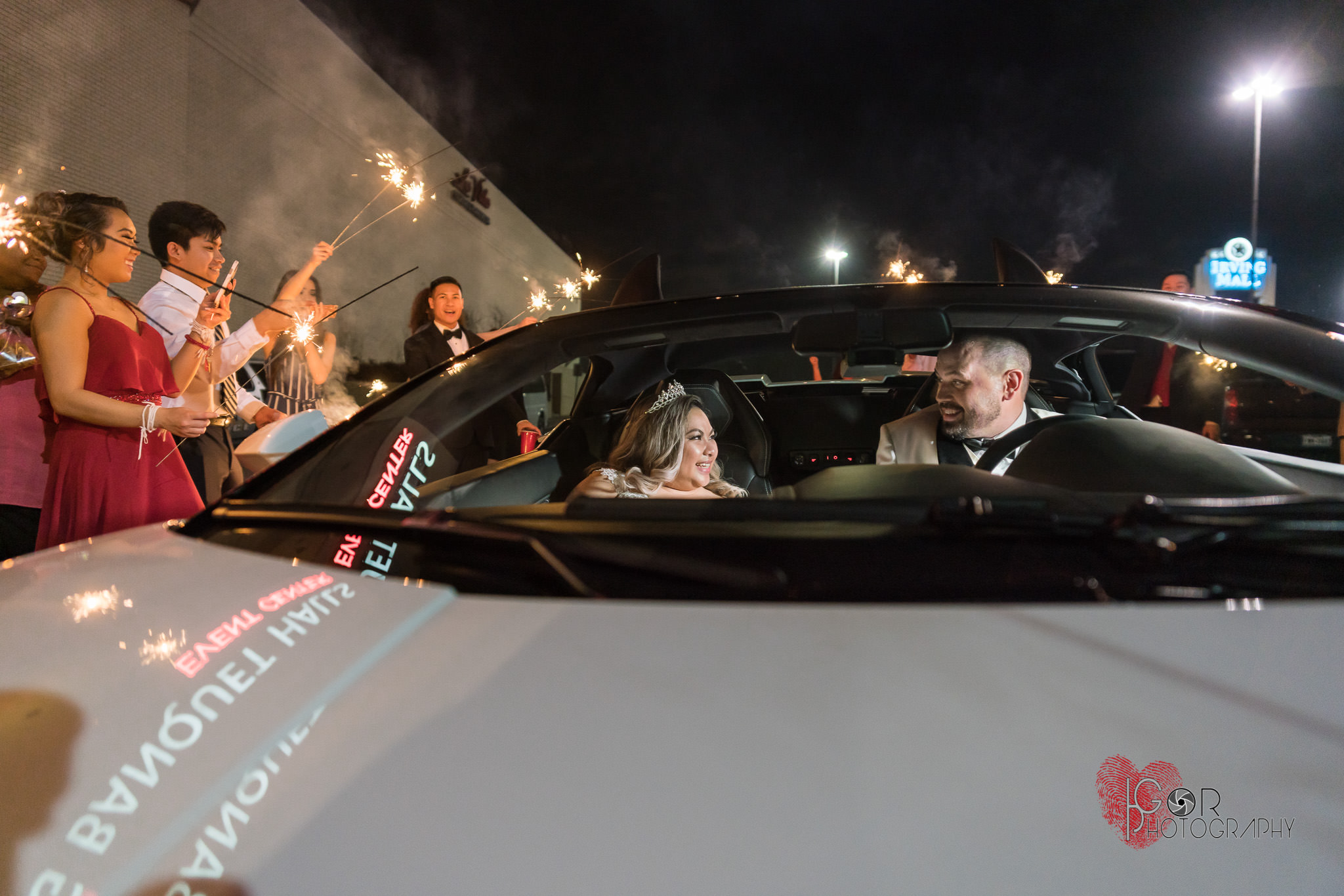Like a said many times before, I absolutely love to shoot different cultures weddings and interfaith weddings. This particular ethnic Laos and American wedding was a great example of traditions, culture and in the synergy of interfaith love.
I got the honor to document this stunning Laos wedding between Maggie and Brad in Irving, TX.
Whenever I get the opportunity to photograph a non western wedding with different culture and traditions, I always take the time to do some research about what to expect and how to best document it.
Hereby I will describe the different parts of this Laotian-American wedding and its important traditions.
Engagements are not that common in Laos, so this couple choose to not do an engagement session.
Most American-Laos couples choose to split their wedding into two parts, one is the traditional Laos wedding ceremony and the other is the modern western wedding and reception. Maggie and Brad choose to have the Baci ceremony in the morning of their wedding day. Only family and close friends where invited for the Baci ceremony. The traditional Laos wedding ceremony was held at the bride’s family home, as the tradition calls for.
I started the coverage of the bride and groom getting ready at Maggie’s family home.
The Bride Price - Sour Khor
The actual wedding preparations start weeks before the wedding with the Sou Khor (bride-price negotiation) procession.
The bride-price is usually gold and money, but it can be anything of value. Usually this is asked by the bride's parents as a refund for the breast milk that has been fed to the bride since she was newborn. The amount depends on the family social status of both parents, but nowadays many parents don't ask for anything so long that their daughter is happy.
The wedding date is decided on when both sides have finalized the negotiations and the Sour Khor is agreed on.
The wedding date has to be on a suitable day in the lunar calendar, so the parents will consult elders or senior monks, who have great knowledge of Lao custom and tradition, before the wedding date is chosen.
The Laos Wedding Preparation - Oun Dong
The night before the wedding an informal ceremony is performed at both the brides and grooms home This is called Oun Dong (translates to wedding or marriage warming) and it only involves family and close friends who come to help with wedding preparations as well as to eat and drink. The centerpiece of the preparation includes the Pha Khaun (handmade marigold pyramid made of banana leaves and flowers). They also prepare food for the wedding and the new couple’s bedroom. Tradition demands the bed must be made by the mother of the bride or an older female who has a good family (with a good husband and good children and who is not a widowed, or divorced).
On the wedding day, the bride is dressed with a traditional Lao silk Sinh, and silk blouse, and has her hair tied up in a traditional way with gold decorations. Her wedding day outfit includes a gold necklace, bracelets, earrings and a bell.
The groom gets dressed up usually with cream or white silk shirt and a traditional silk Salong.
Traditional Laotian Wedding Outfit
The Bride Price Giving Procession
During the wedding day morning, a procession of the groom is sent ahead to give the bride-price to the bride’s parents. The bride-price is usually gold and/or money. The procession consists of a group of few older men and women, who could be the groom’s parents and relatives and that are good and know a lot about Lao customs and traditions.
The Groom Parade - Hae Keuy
When the bride price giving procession is completed, the groom’s group is informed and they parade to the bride’s home, playing musical, singing and dancing along the way (they sing a song, that’s specially composed for this groom parade). Everybody is cheering, laughing and enjoying the parade. The groom walks under an umbrella that’s is hold by his family or friends. This part of the Laos wedding is really festive and joyful. This procession is called Hae Keuy (the groom parade).
When they arrive at the bride’s house, the groom and his group are met by the bride's relatives where a silver gate and a gold gate are waiting and closed. These doors are symbolized by lines of silver and gold bells stretched across the door way (also known as the Golden and Silver Gates) to stop the groom from entering before he is granted permission. In order to be granted permission the groom has to pay the brides party.
The groom will be permitted to walk through the gates only after he drinks with the bride’s party and pays them to open the doors and after their traditionally questions such as: “Where are you coming from? What are your intentions? What are you bringing?” etc. are answered. Extensive and playful bargaining, questioning and drinking starts at this point, this is another fun part of the Laos wedding.
The groom doesn’t have to answer the questions since the relatives will do all the talking for him. All the groom has to do is to drink and offer his money or gold to the door attendants. When he has paid “the entrance fee” and they are happy with the small money gift they will grant him permission to under through the gates.
But before he can step inside the house he has to have his feet washed by the bride’s younger sister, or chosen relative, this person has to be female and have to be younger than the bride. The groom then gives some money to the person washing his feet, and then he can enter the house
The Baci or Sou Khuan Ceremony
The groom is met at the door and led by a female relative of the bride to the Pha Khoun, the ceremony site where the Baci will be performed. Once he takes seat, the bride is led to the ceremony site from her room by another elder female relative. She is seated on the left side of the groom with the parents and relatives of both sides sitting nearby. During the seating process the bride’s relatives and friends will give her a slight push to make her to lean on the groom unintentionally, and the other party will do the same thing to the groom. According to traditional beliefs, the first to touch the other one during this ceremony will have an advantage in power over the other party in their married lives.
After everyone is settled in, the actual Baci ceremony begins. This involves the chanting by the master of ceremony (Mor Phon), the egg feeding (the bride and the groom feed each other an egg) and the tying of white strings on wrists of the couple.
The first to tie white thread around the wrists of the bride and the groom is the Mor Phon is, followed by parents, relatives, and finally the guests take turns to tie the white thread on the wrists of the bride and the groom. During the tying process everyone chants their well wishes. Some also roll a bill or two and tie it by the white threads before tying it to the wrists of the couple.
The Somma Procession
By the end of the Baci ceremony, the elder relatives lead the couple to Somma (a customary asking for forgiveness and thanking the parents and elder relatives of both the bride and groom). This process involves the giving of money gifts (wrapped inside banana leaves, together with flowers and a pair of candles). During this ceremony the elders give the couple good wishes.
The Procession of Sending the Newly Wed to their Room
The Laos wedding ceremony ends with the sending of the couple to their room. An elder female relative will lead the groom to the room and the bride follows behind. In the bedroom, the elderly person lead the couple to customary pay their respects to the bed and the pillows. After this procession is done, family and close friends take turns to have photos taken with the newlywed couple in their bedroom.
American Wedding Ceremony & Reception
After the Laotian wedding ceremony at the brides parents home it was time to head over to the Las Lomas Irving Banquet Hall for the American wedding ceremony and the reception. The couple changed to a western wedding outfit for the second part of their interfaith wedding.
After both wedding ceremonies were completed, it was time for the big party to begin, all the guests were invited to eat, drink and dance. At this time we did a brief wedding party photo session.
The bride and groom entered the reception hall and opened the dance floor in Lao style dancing (it’s called Lum Vong) and then guets and family join in. Lao style dancing has its very distinct style, with pairs and line dancing going in circle and with specific circular hand movements. The wedding reception party continued late into the night with foods as roasted pig and drinks like whiskey, bourbon and Lao Beer.
There is a lot of dancing, laughter and festivities at this point, it was a mixture of Laotian and. western wedding traditions.
At the end of the night the couple, Maggie and Brad choose to do a western type exit with sparkles and farewell in a white Lamborghini. What a fun and colorful wedding!

